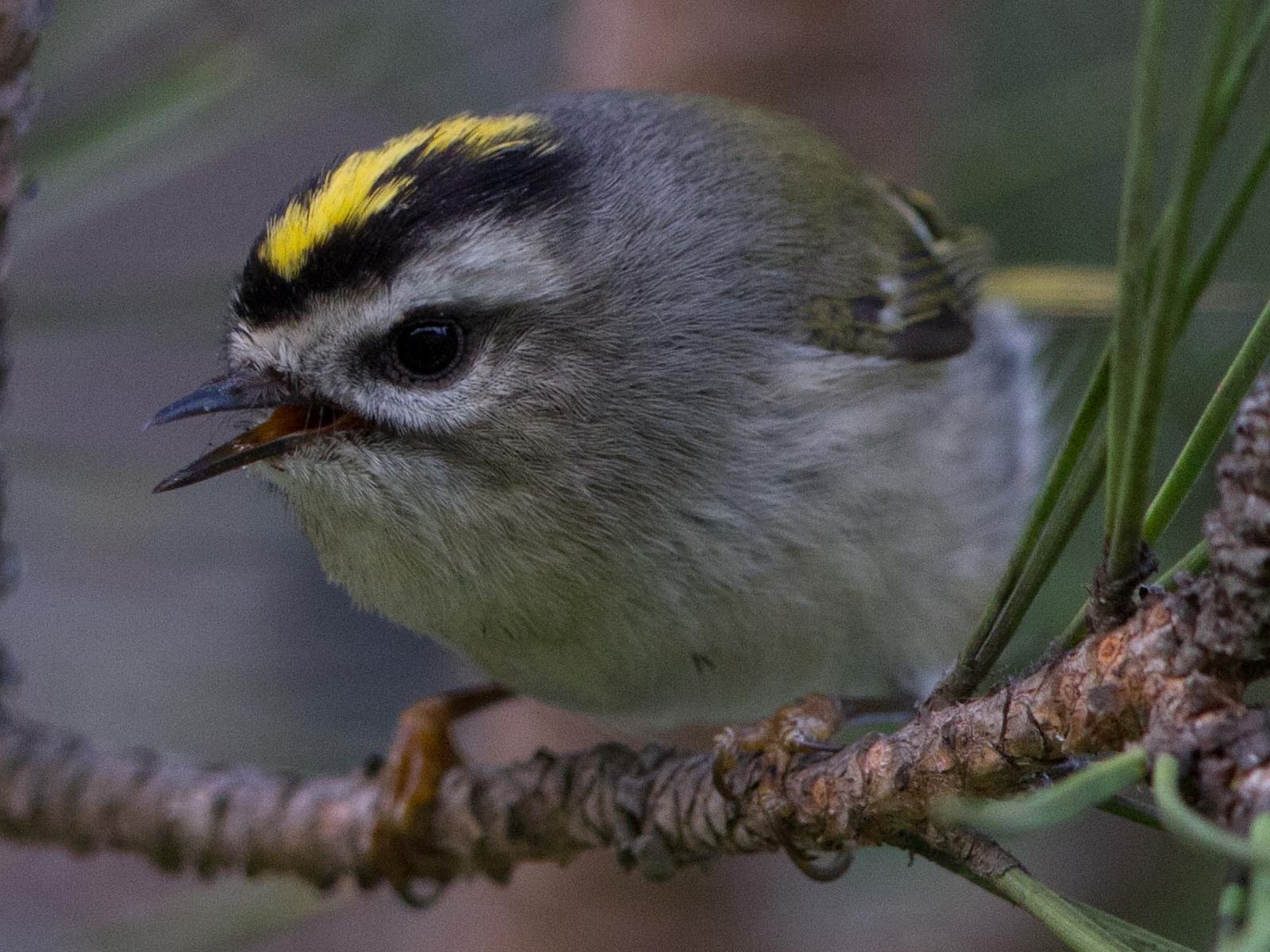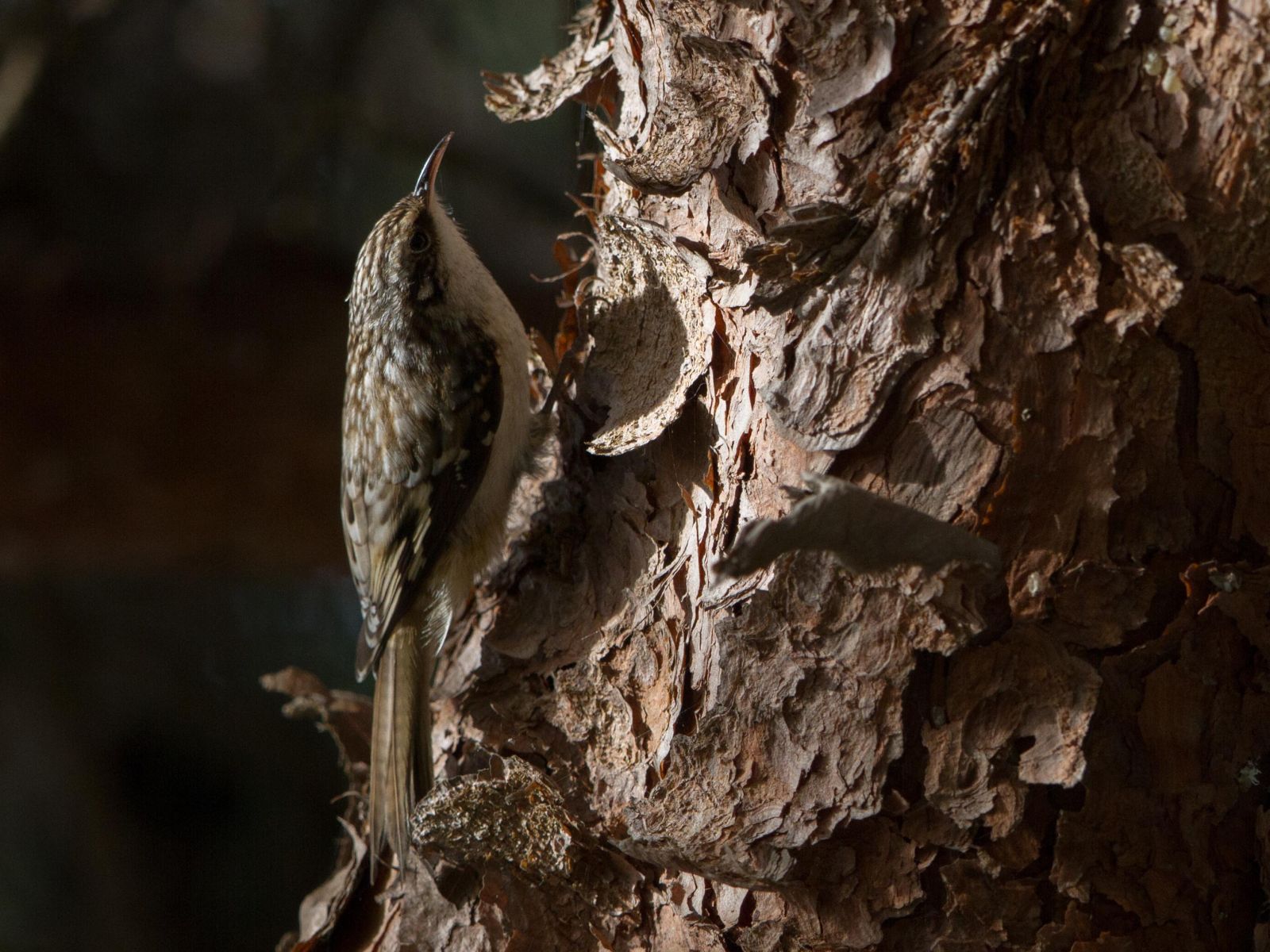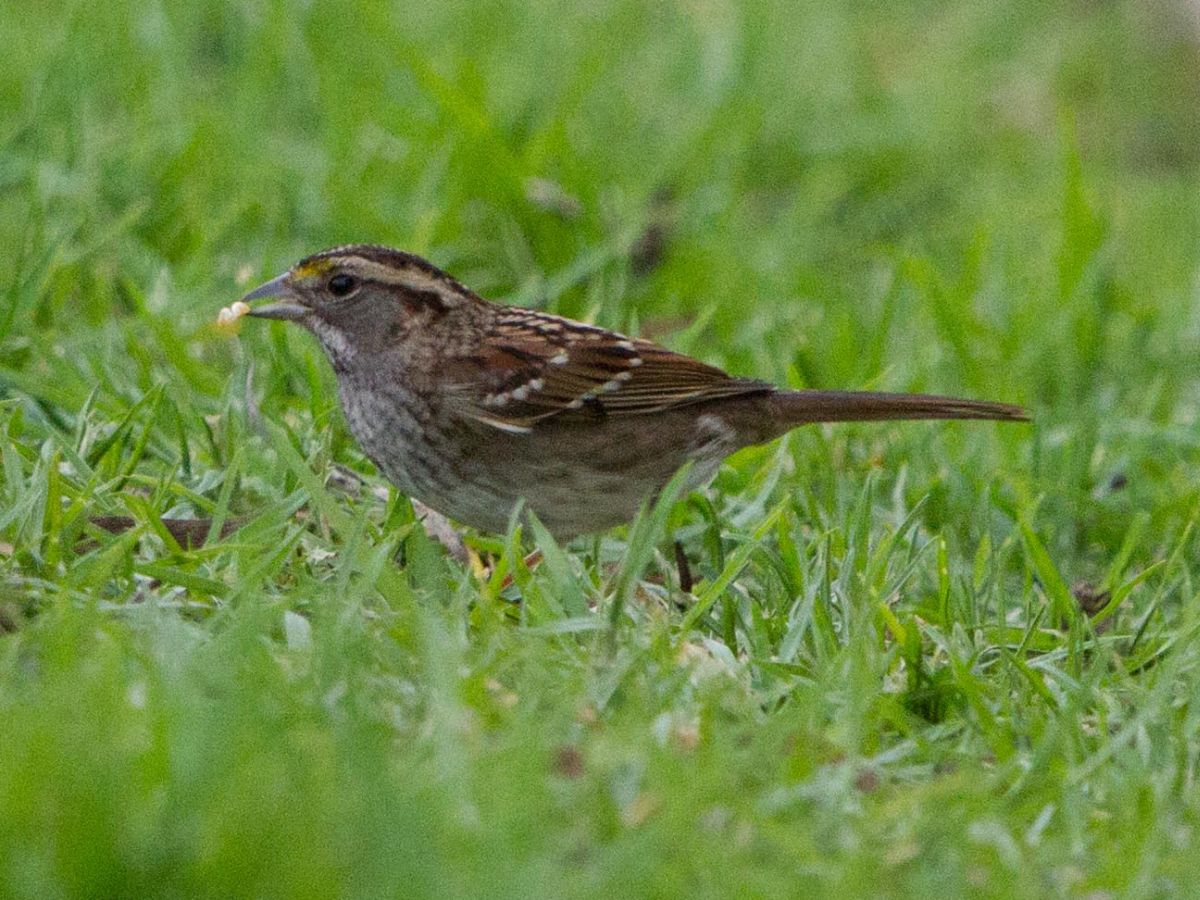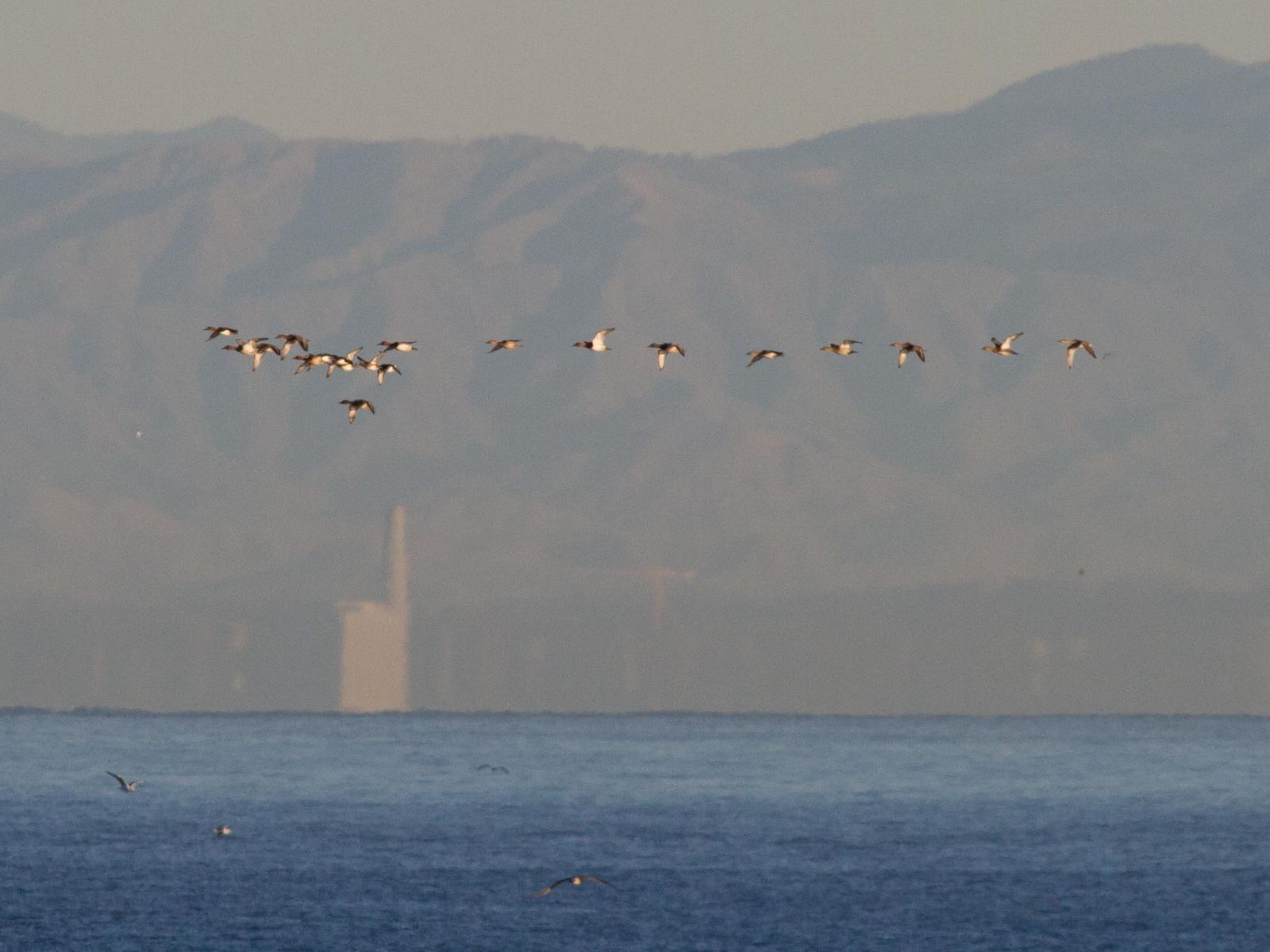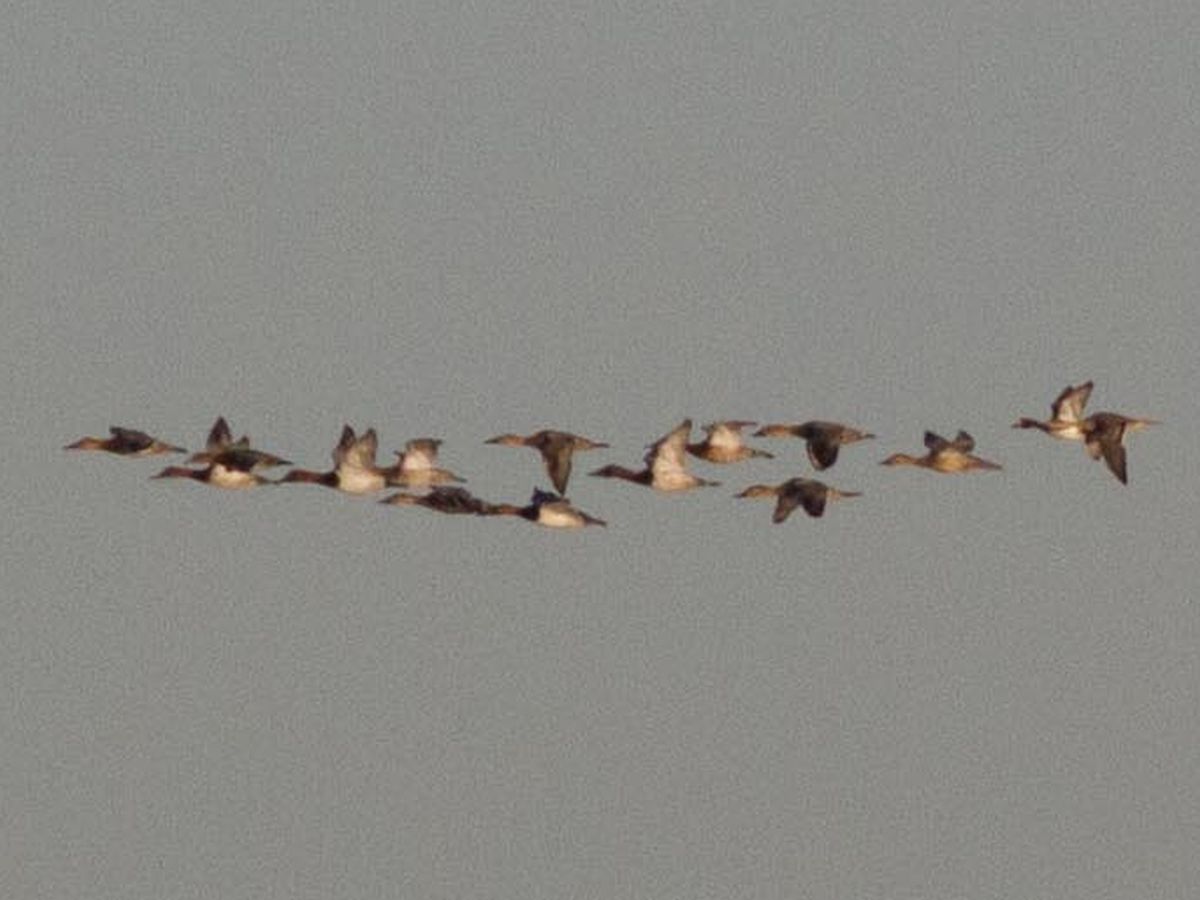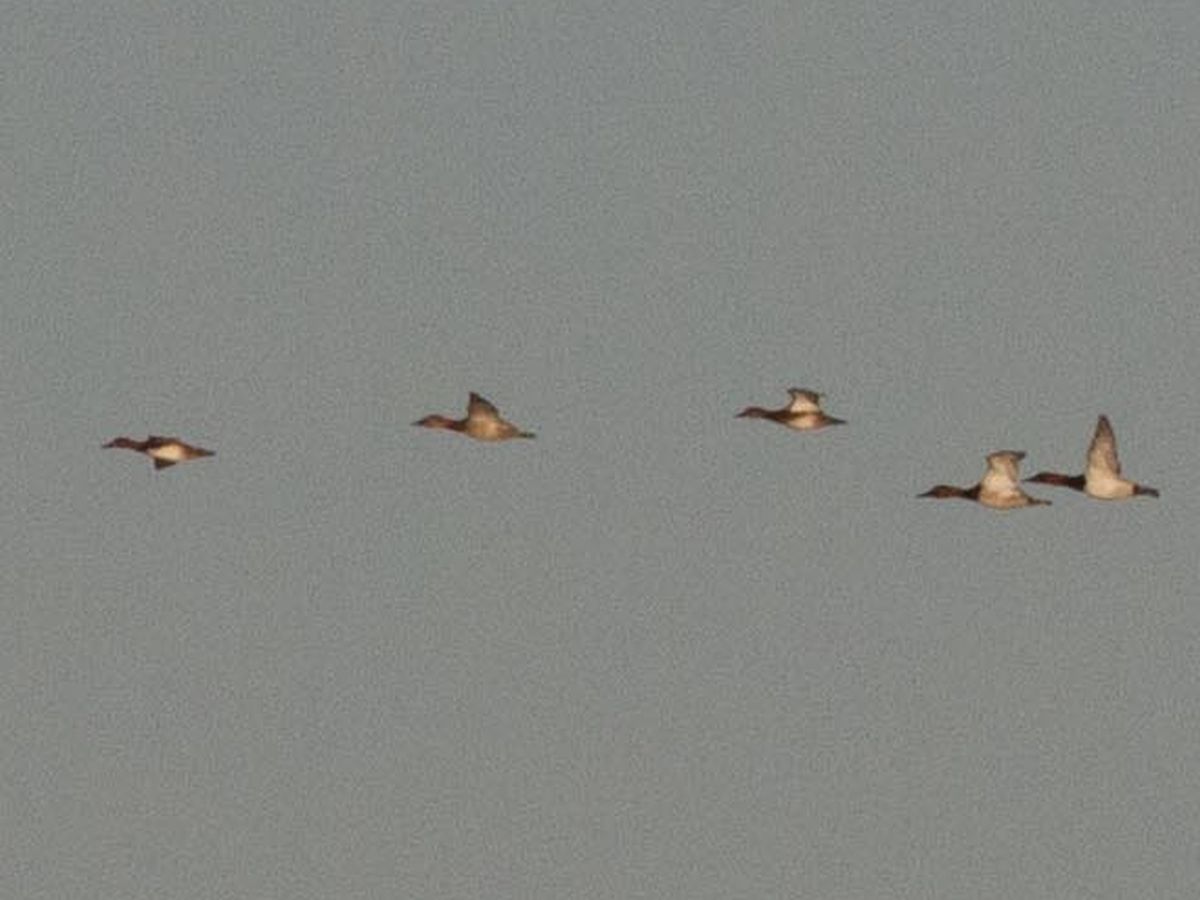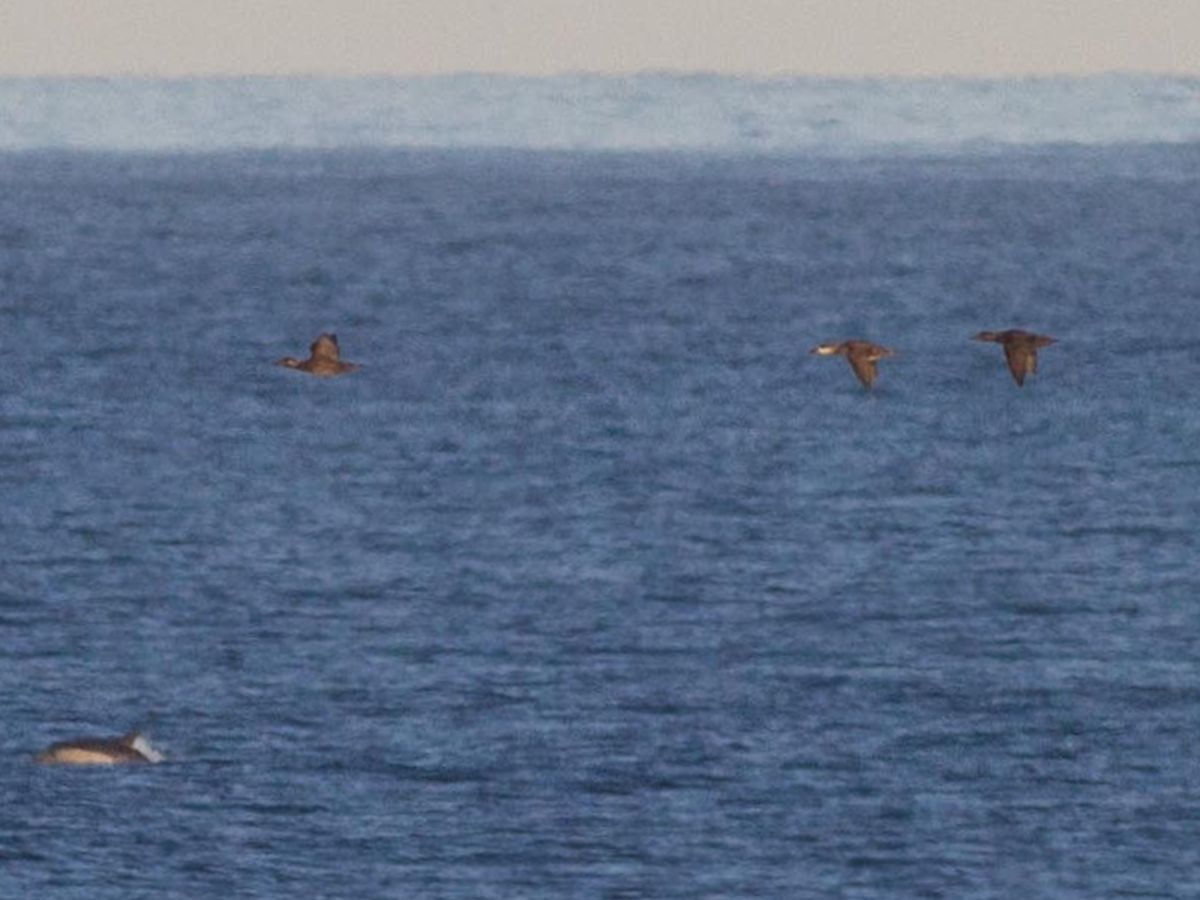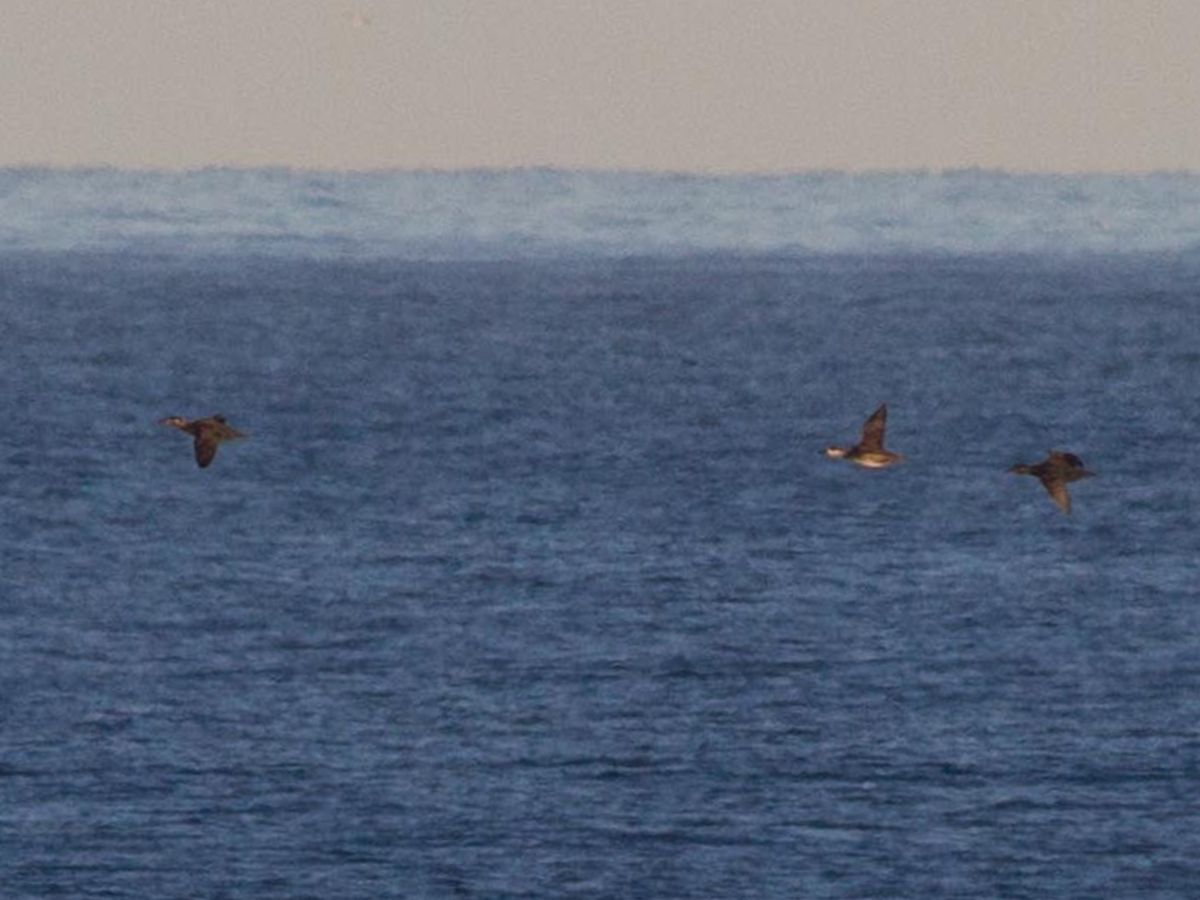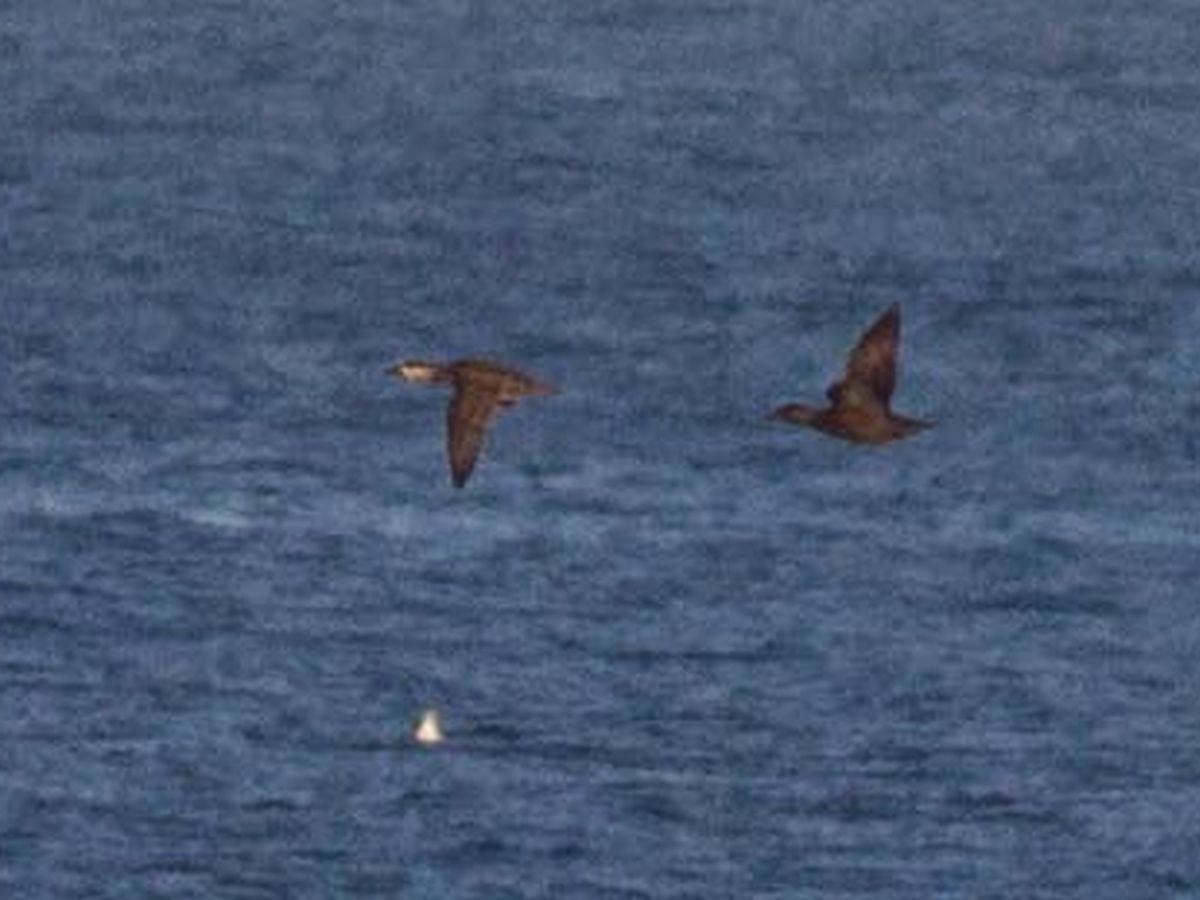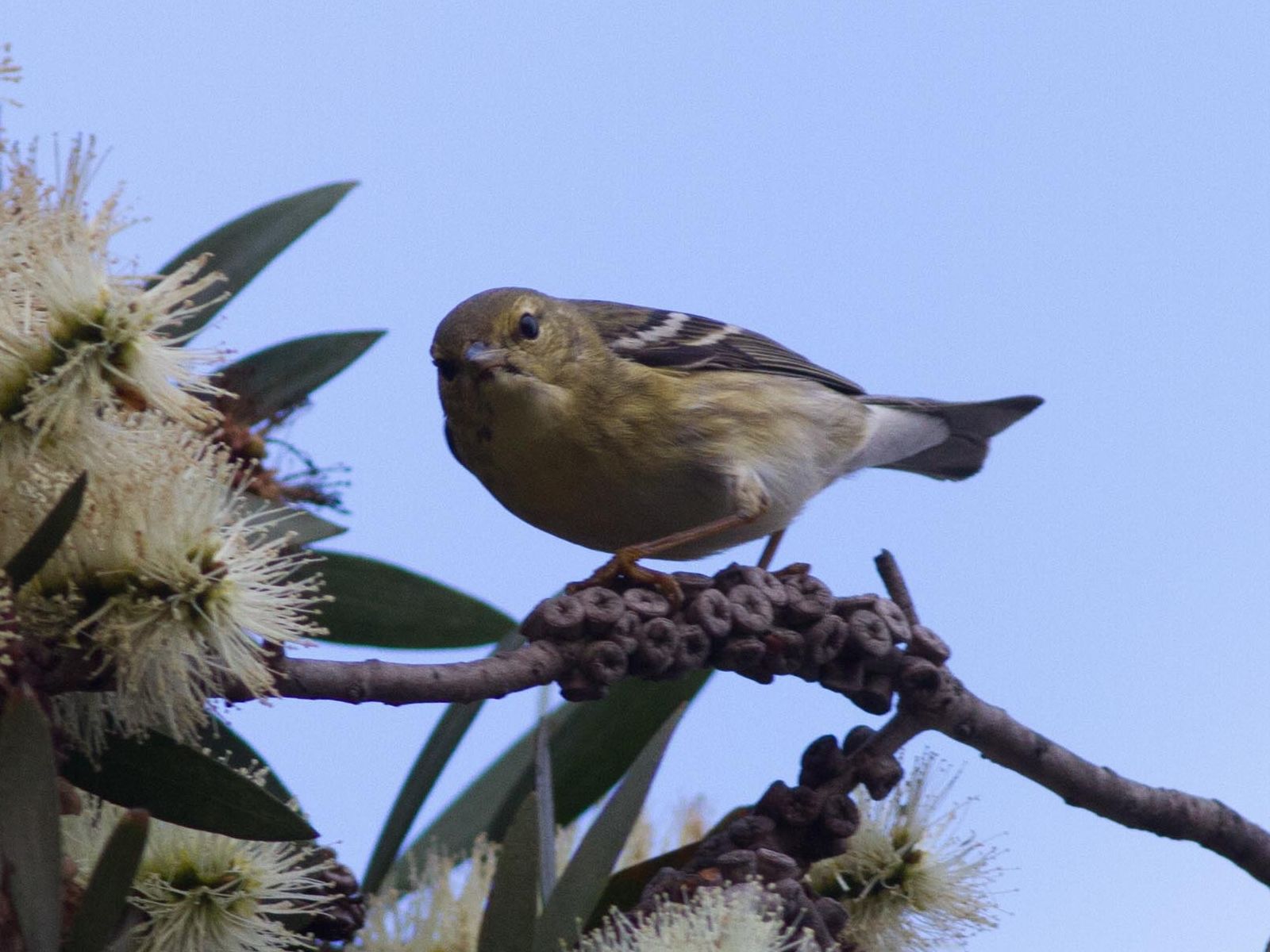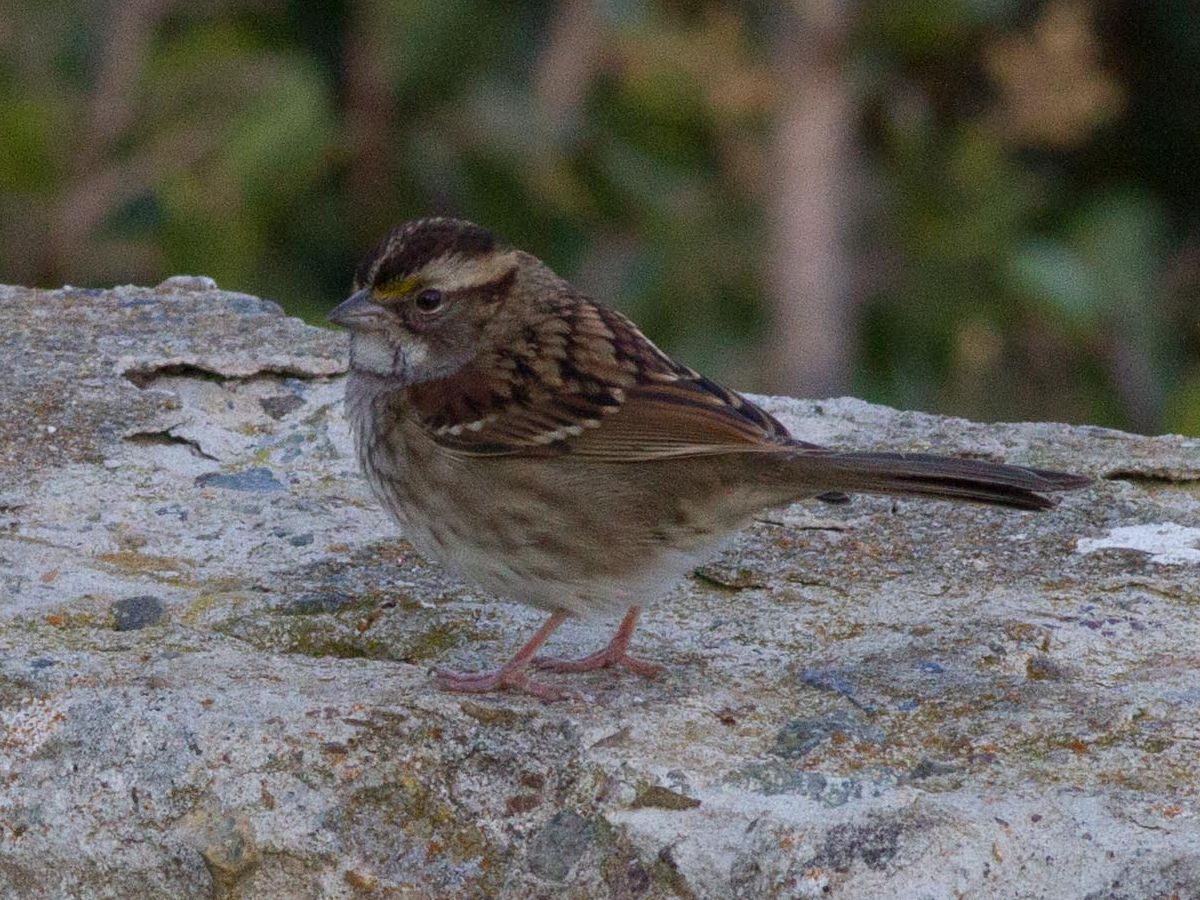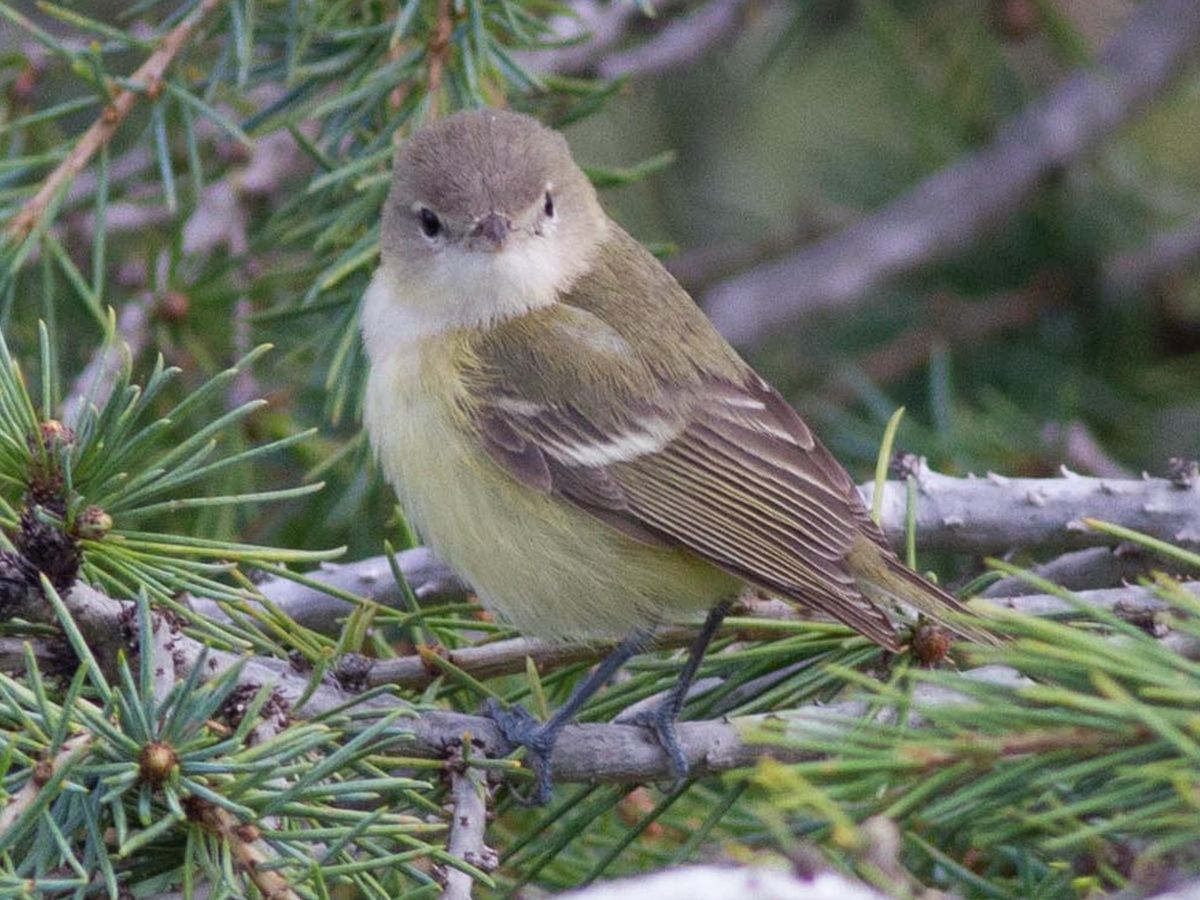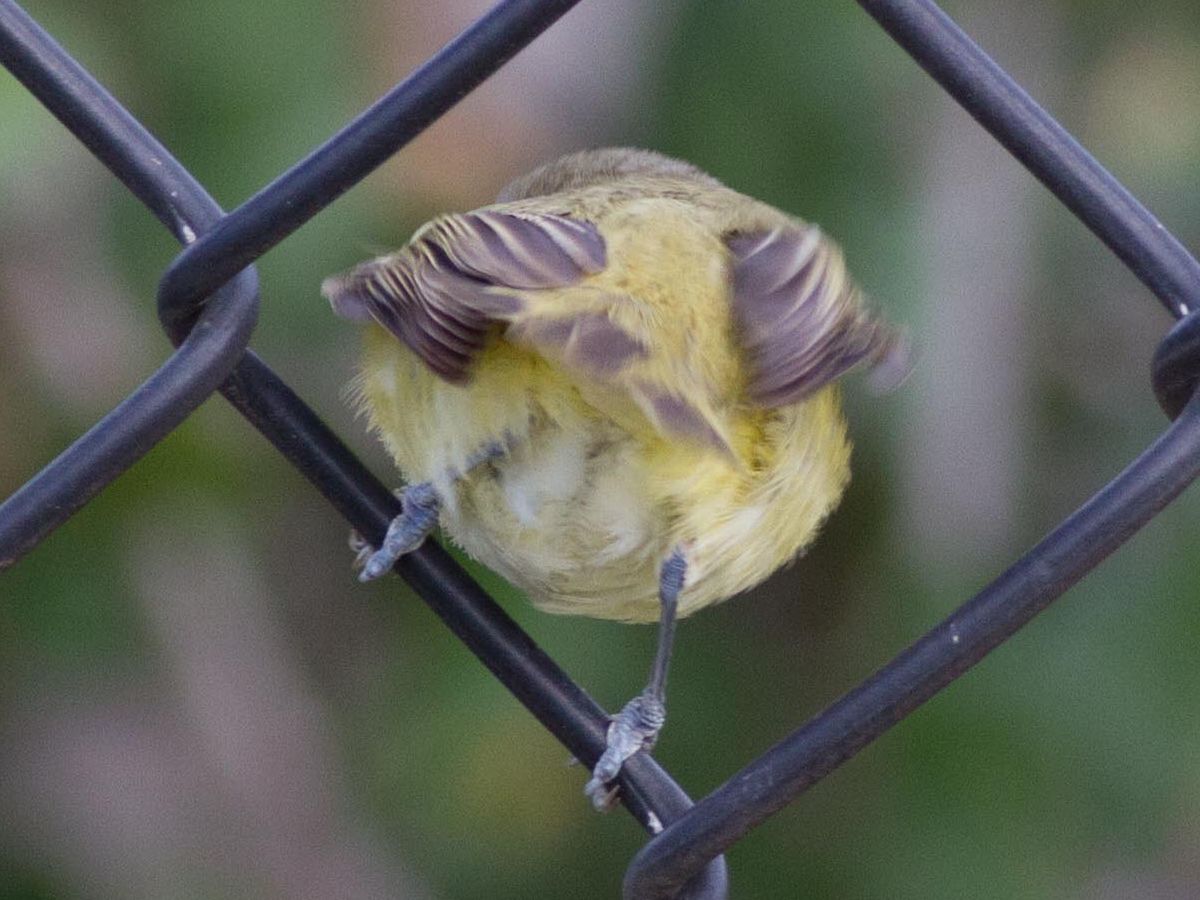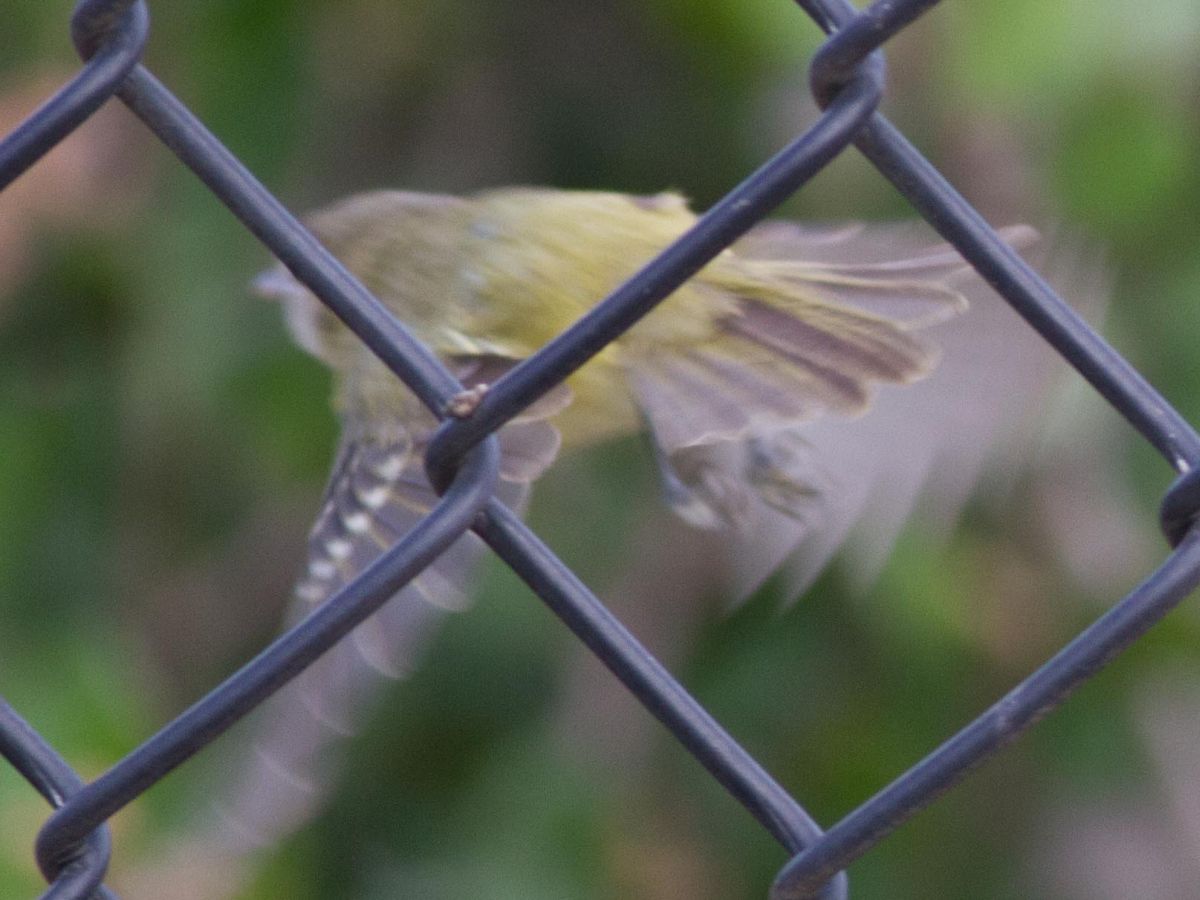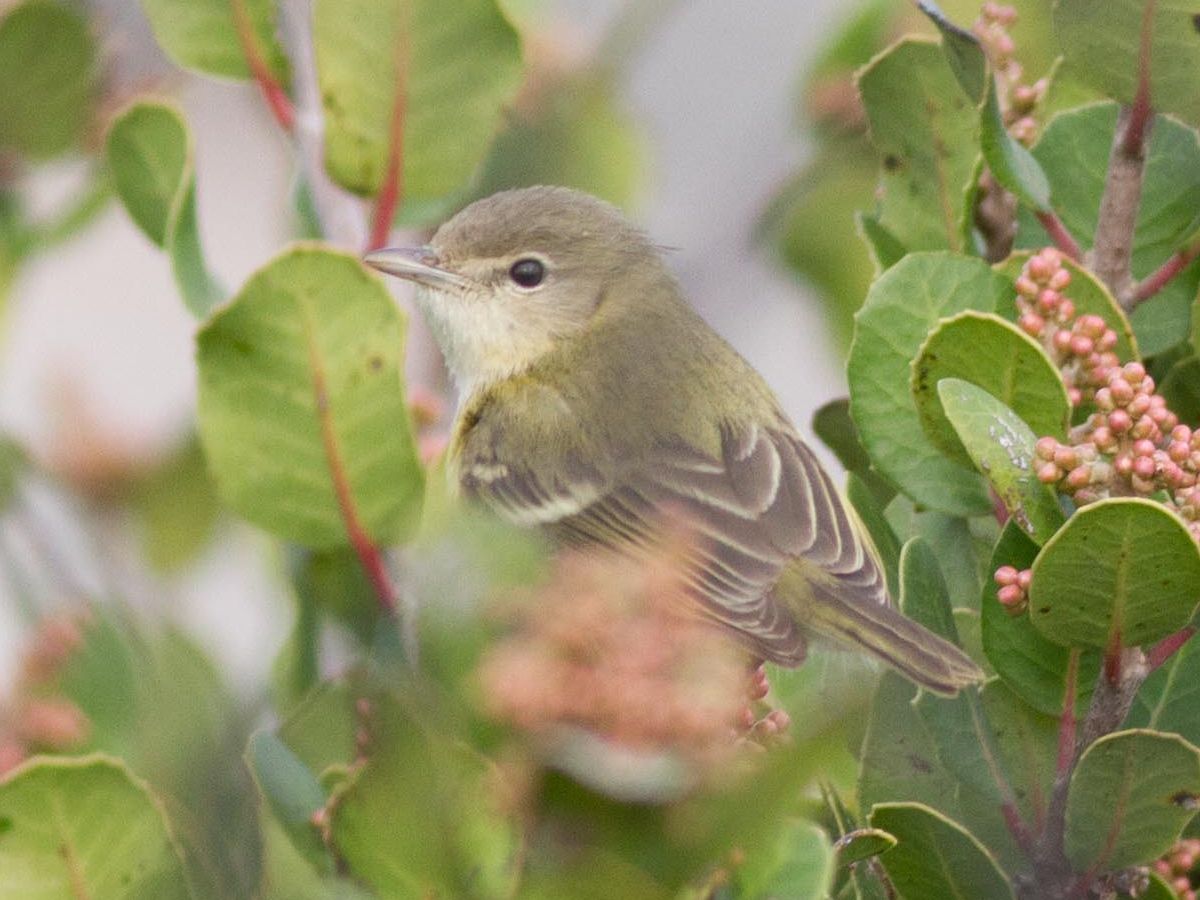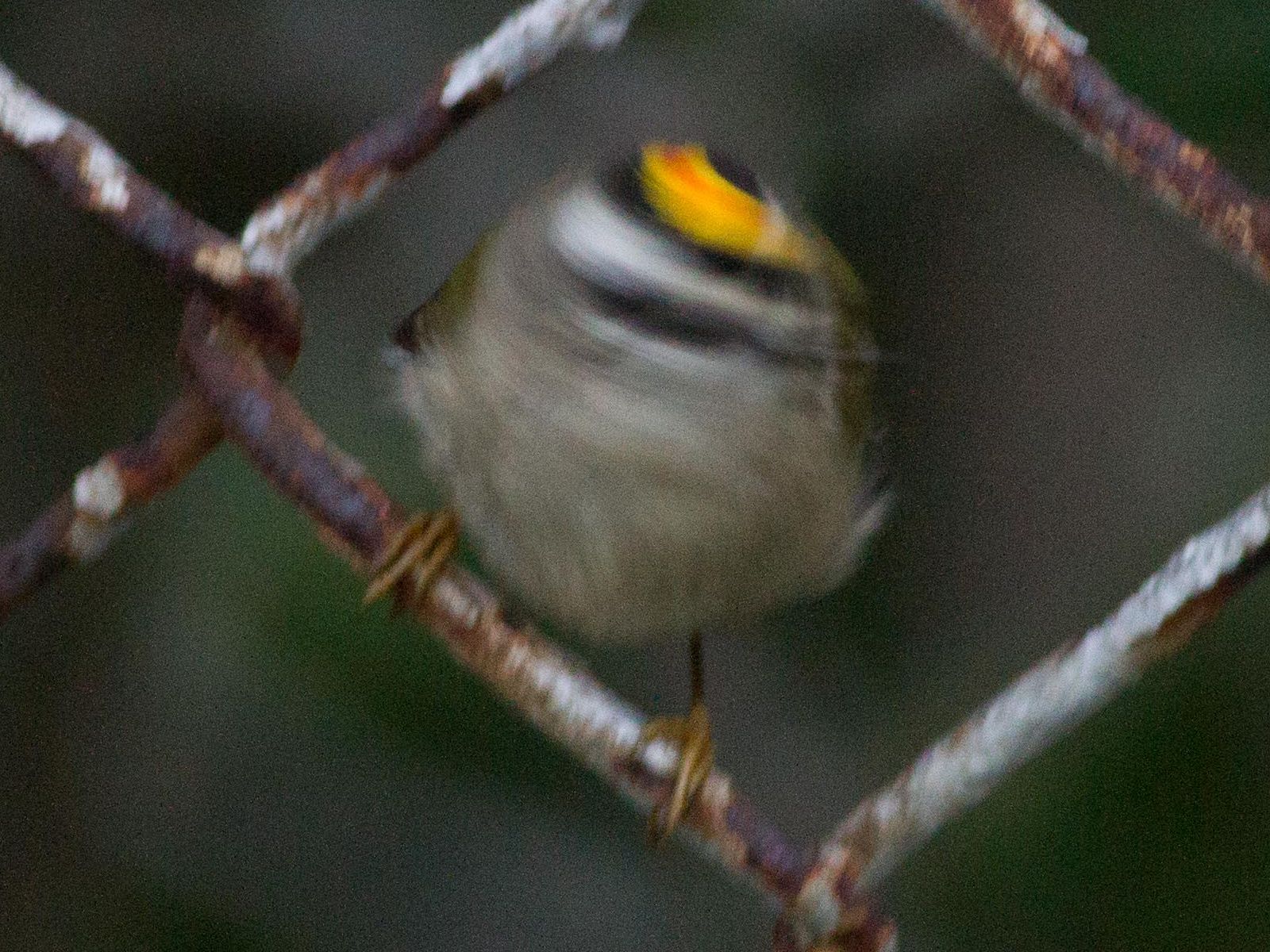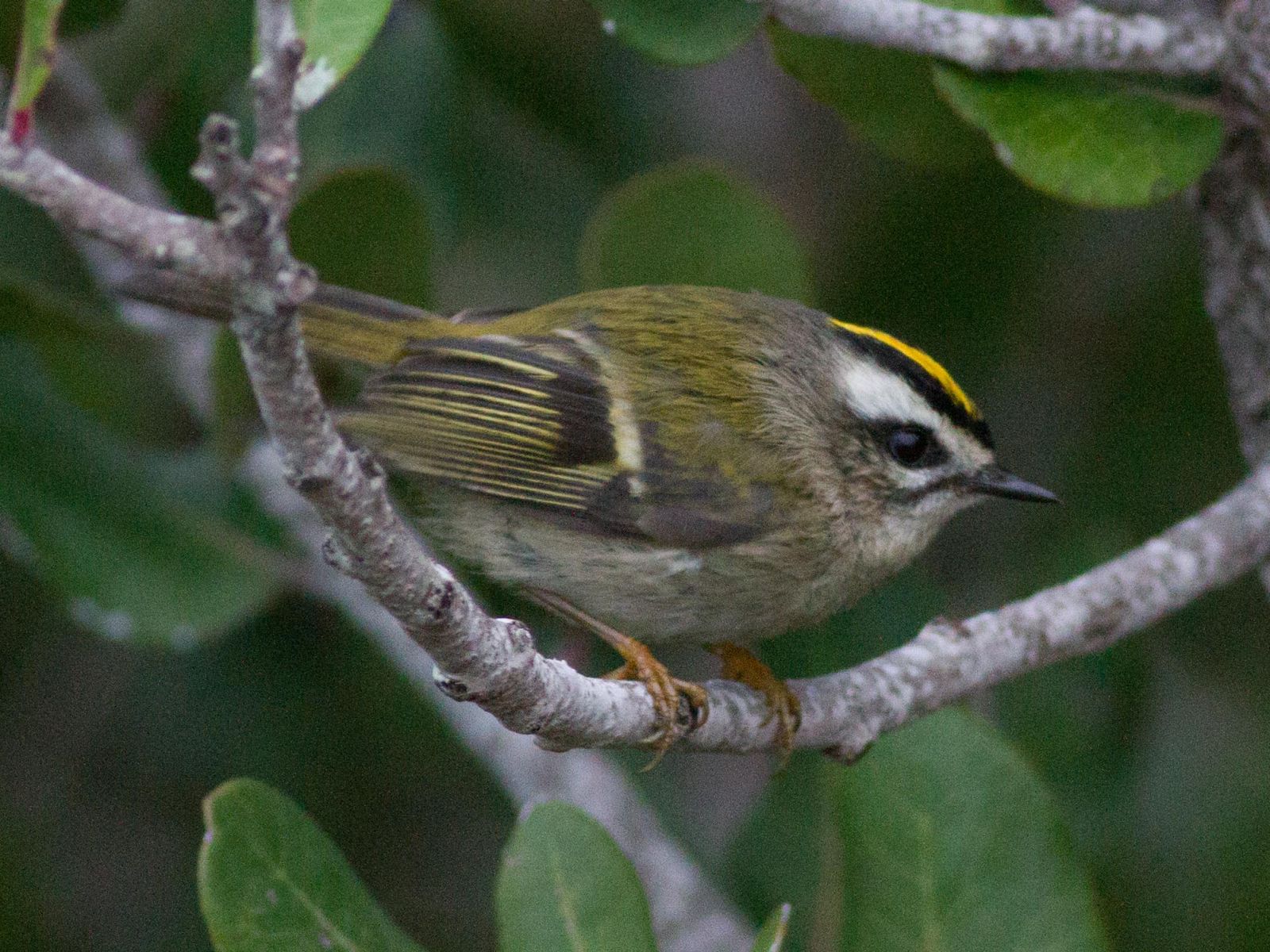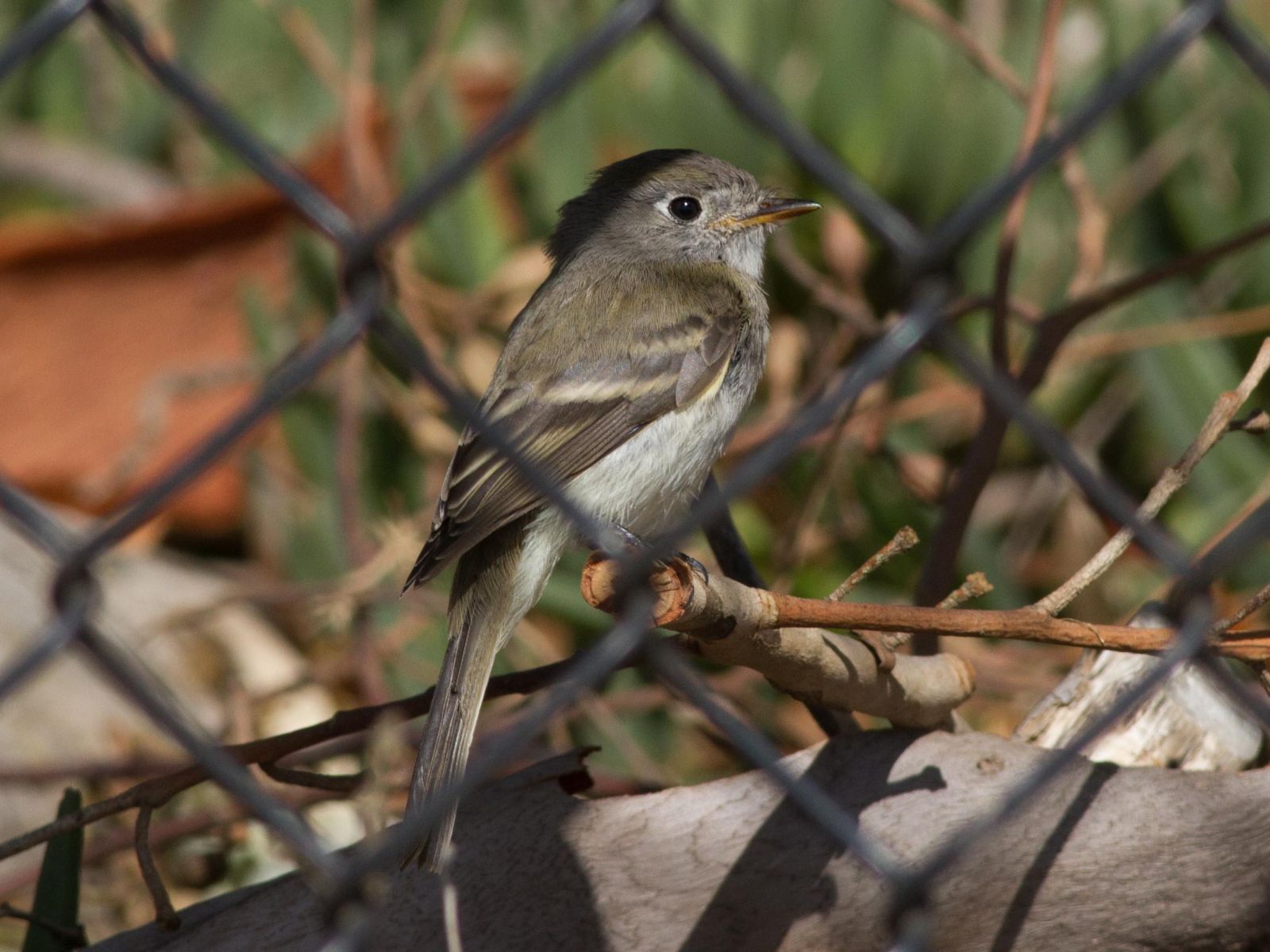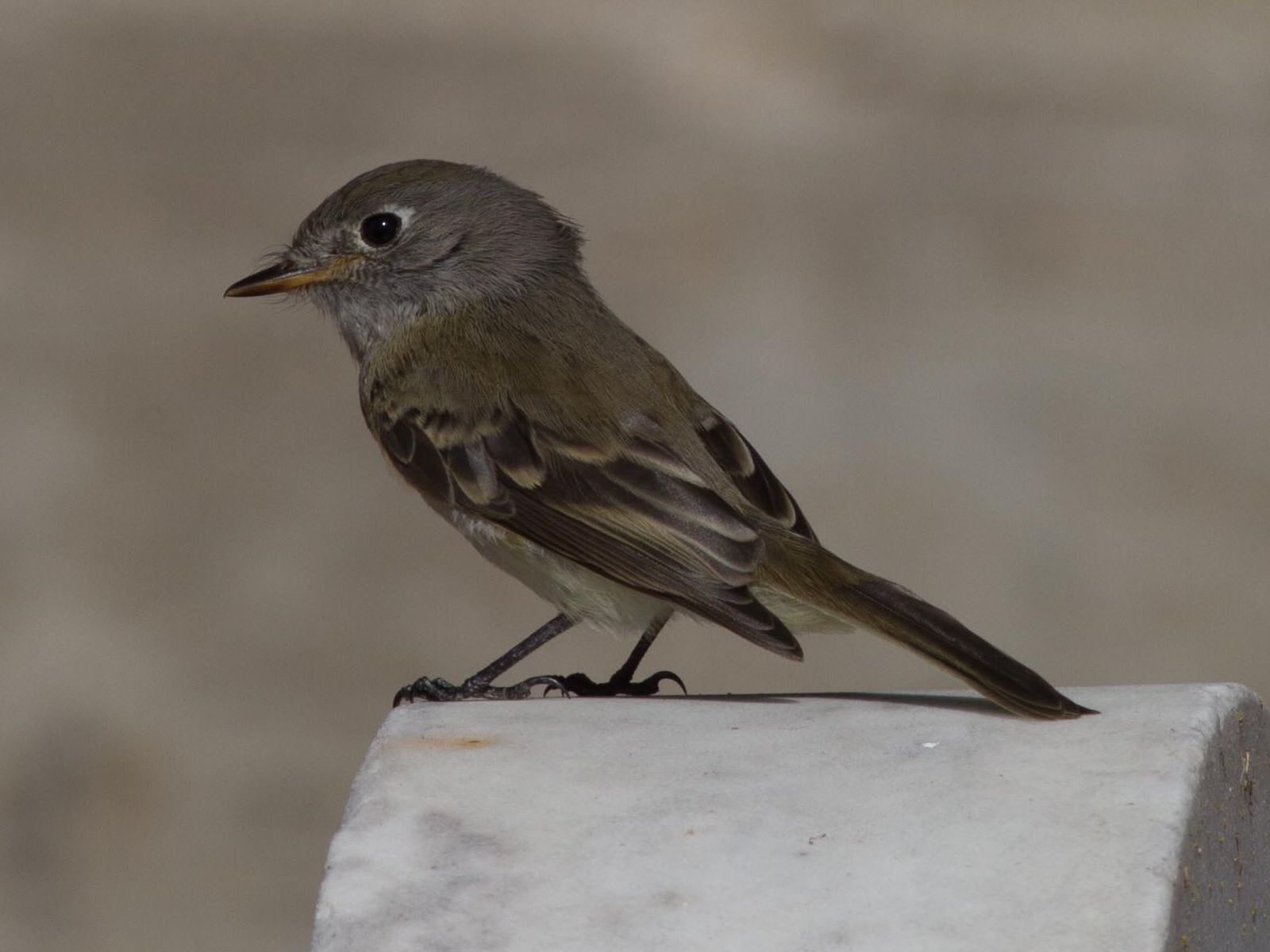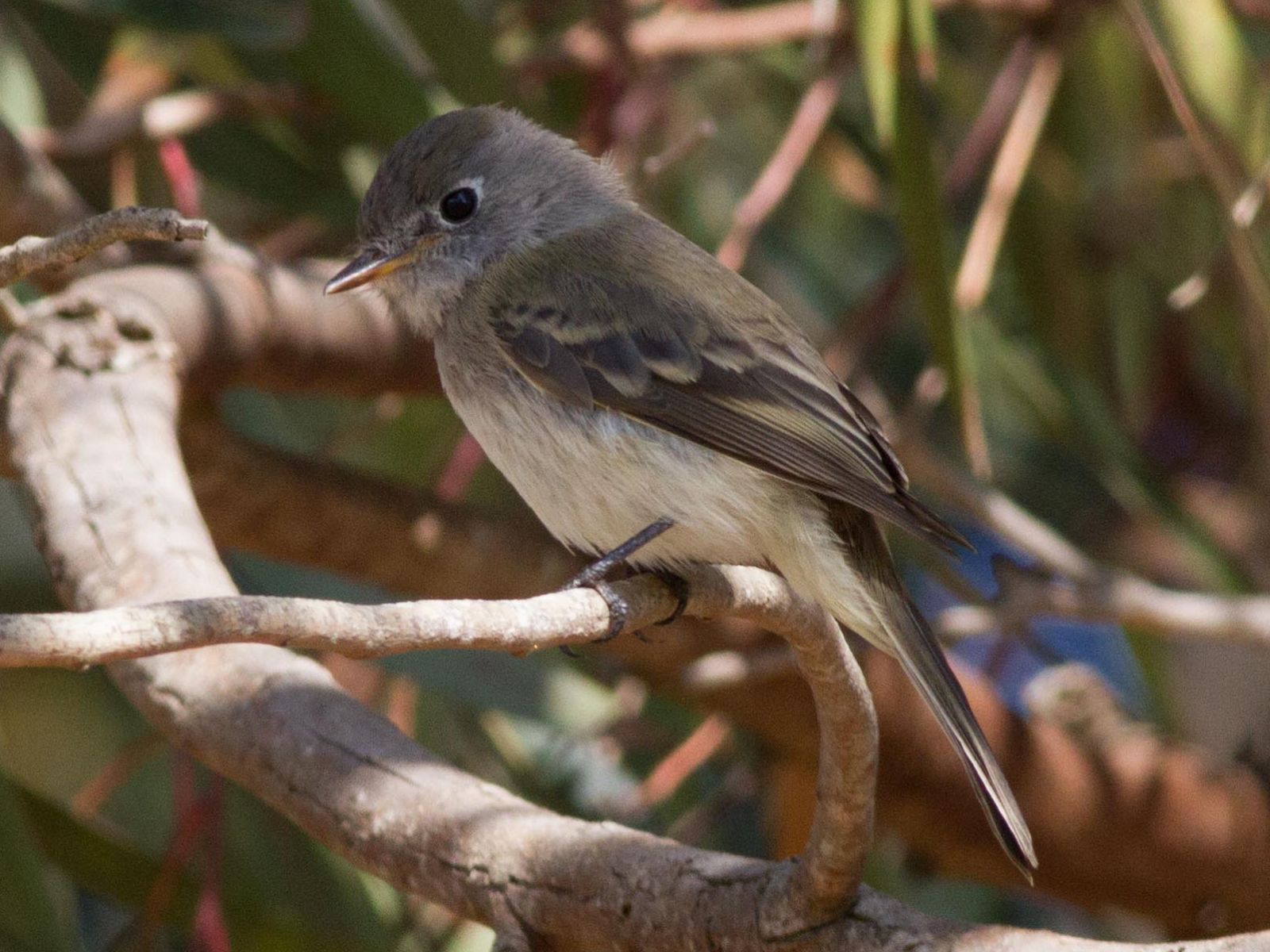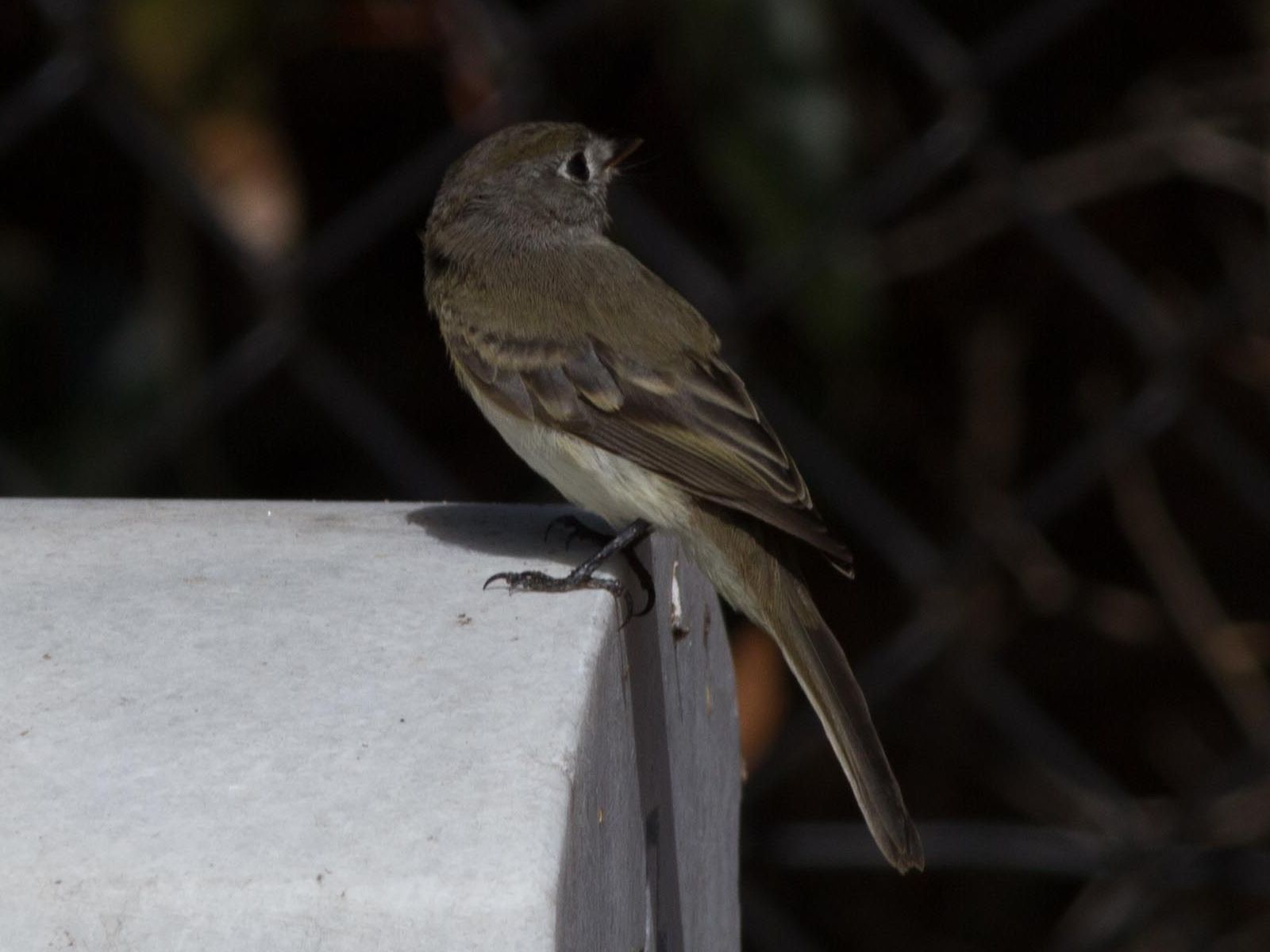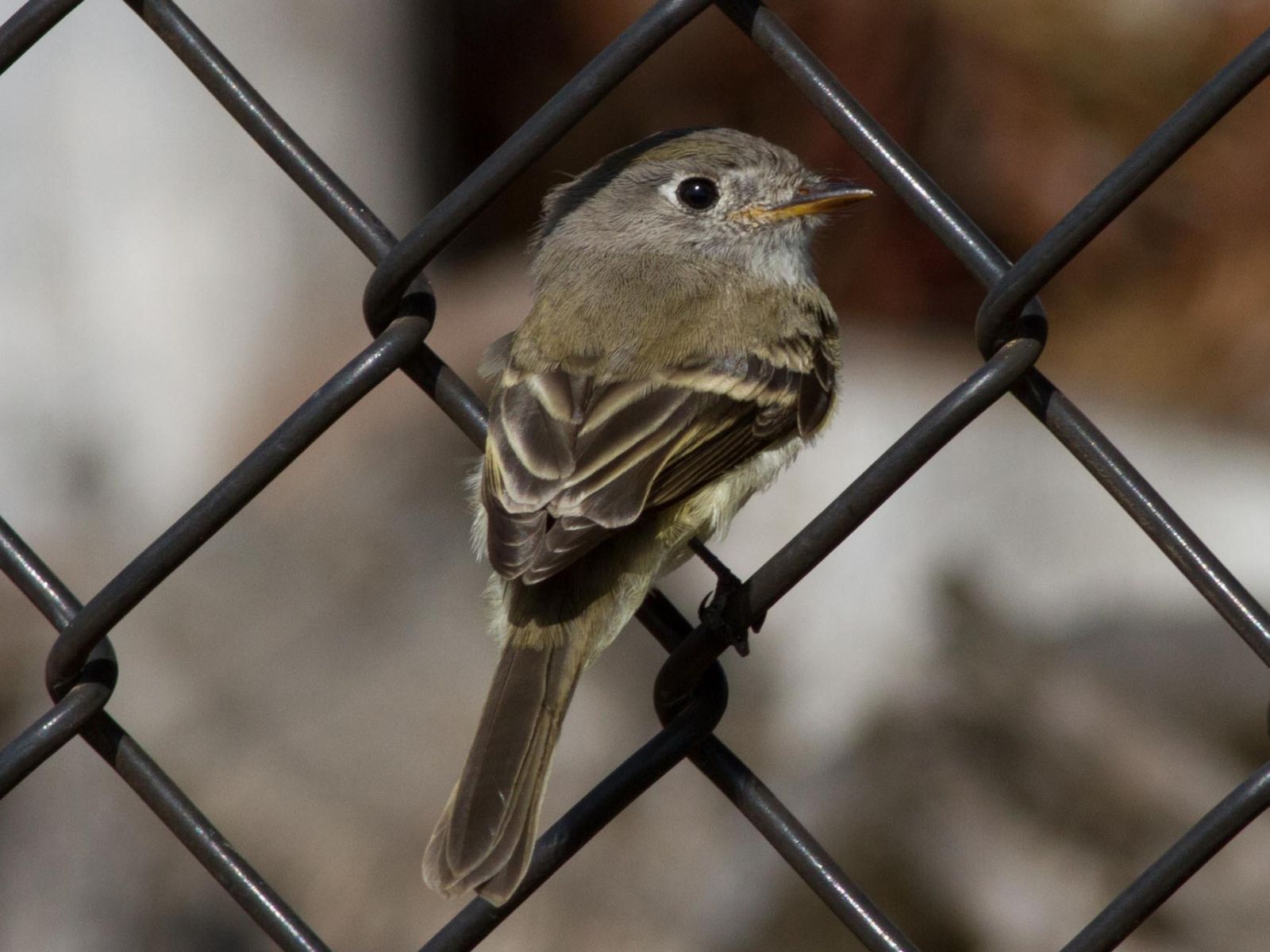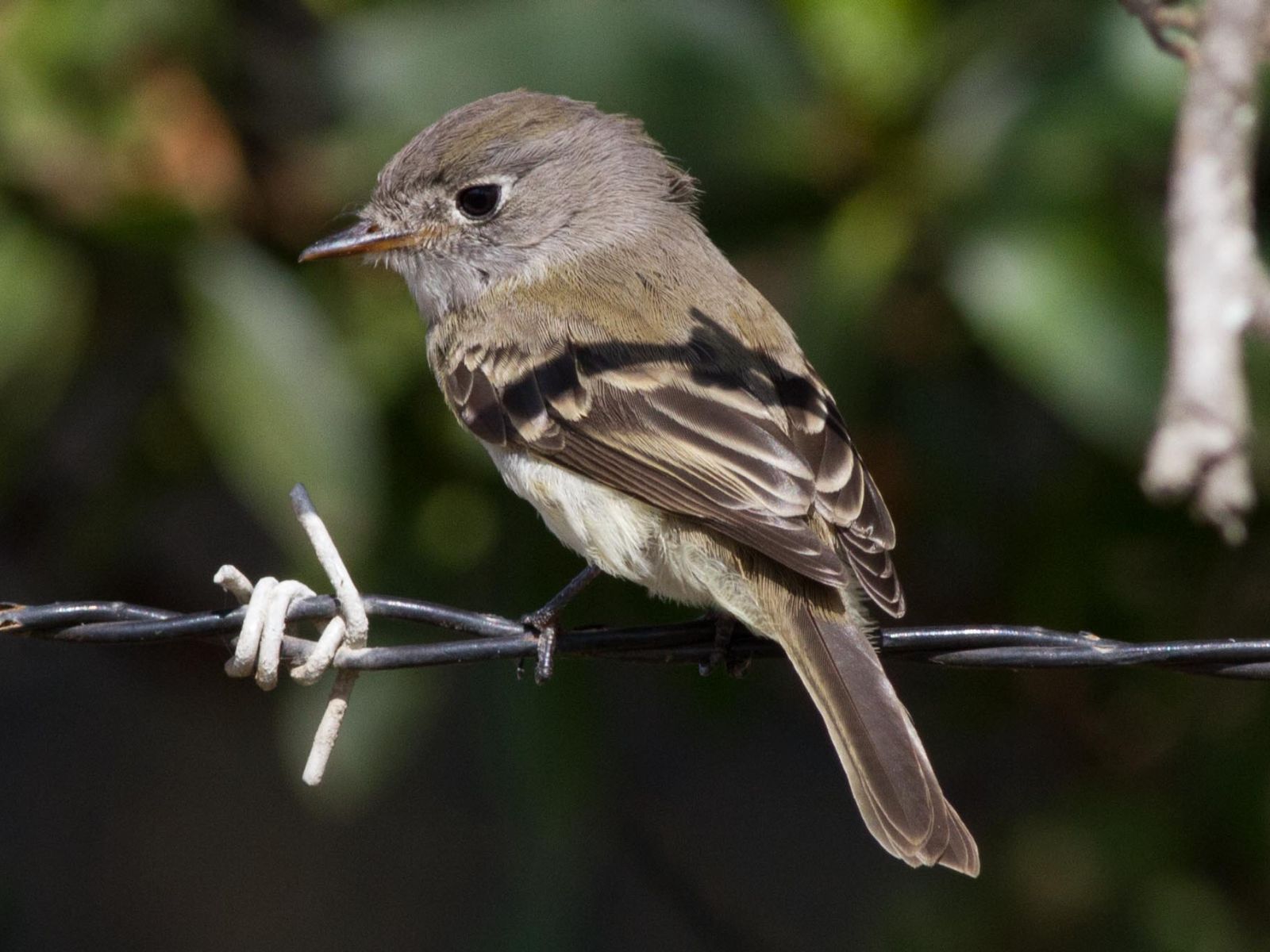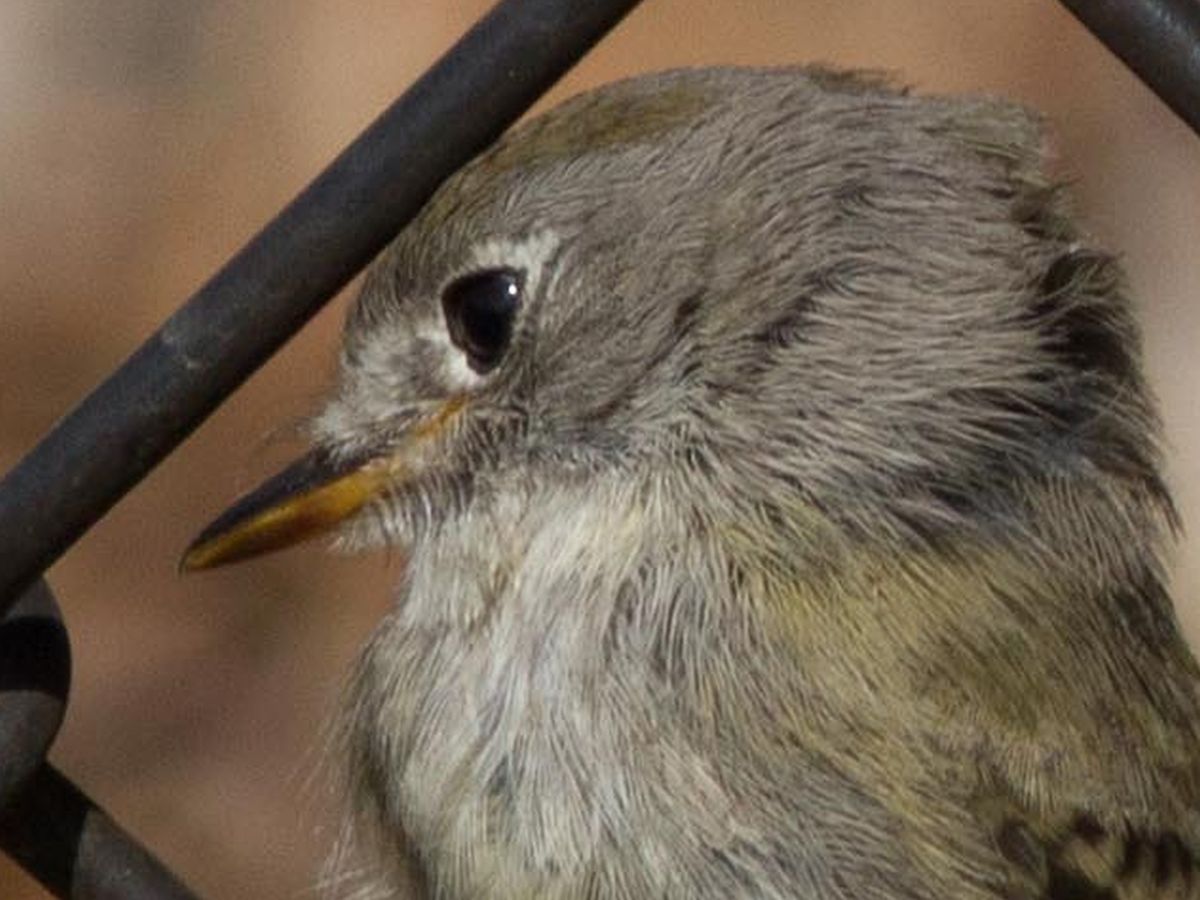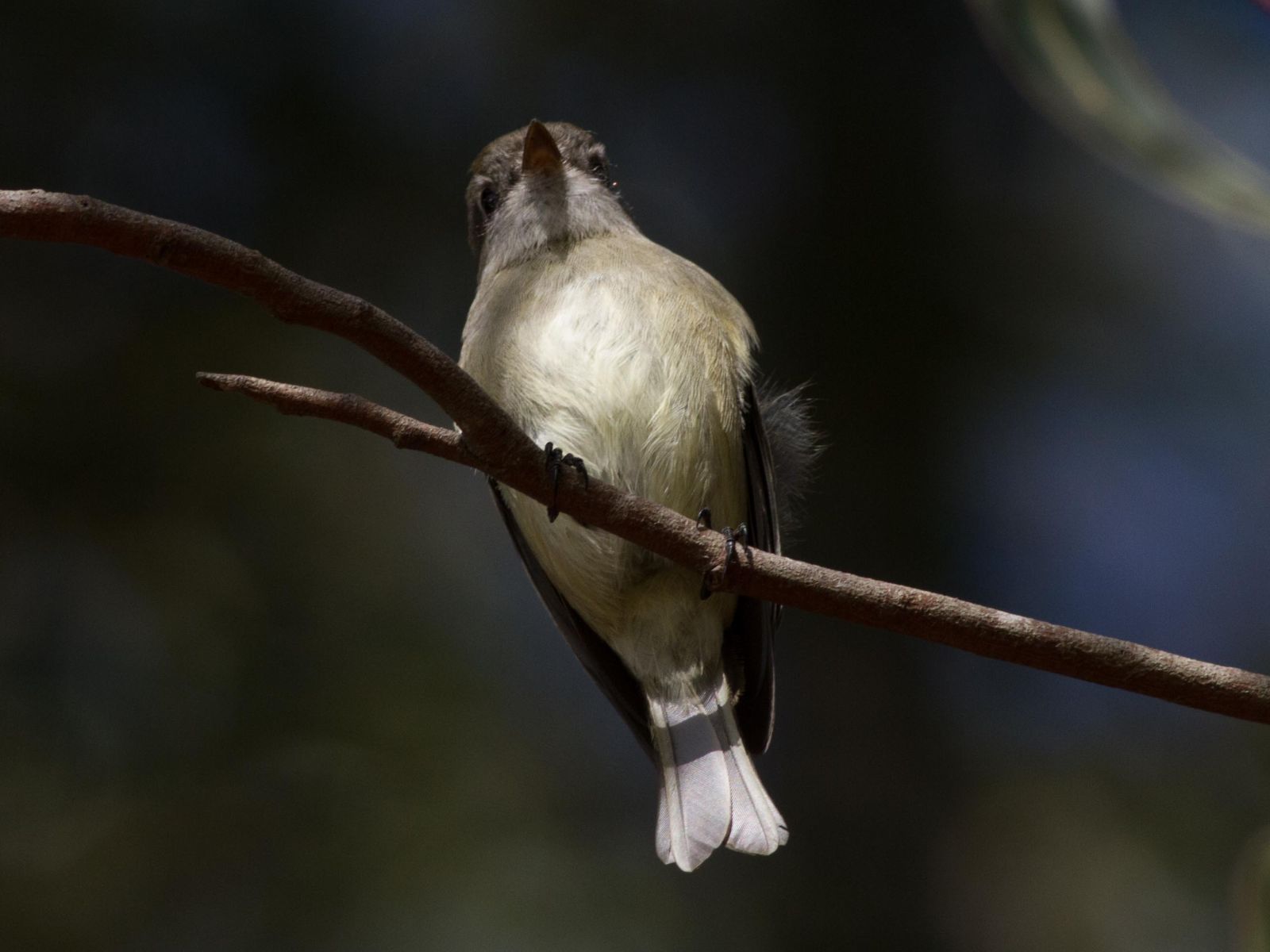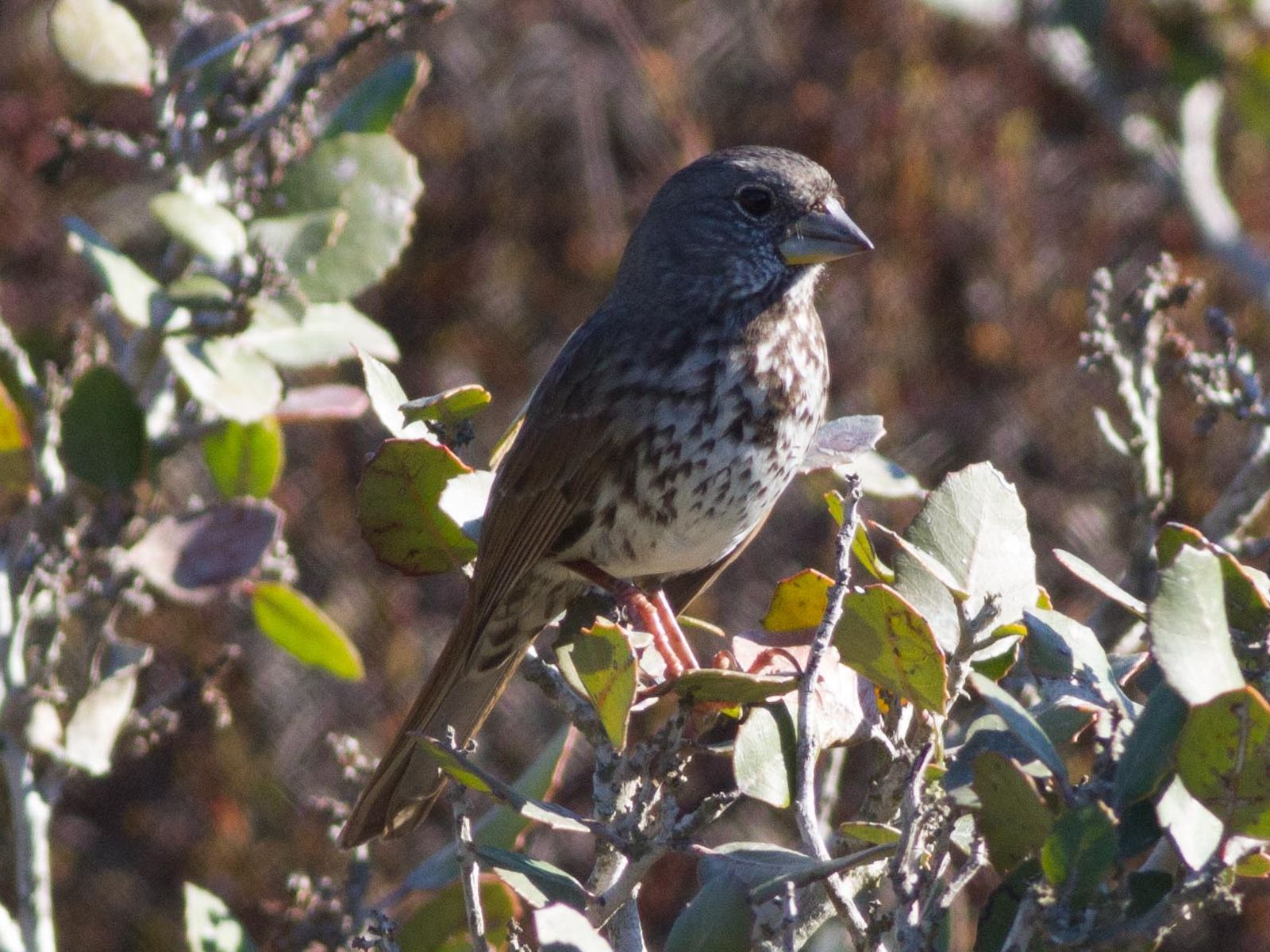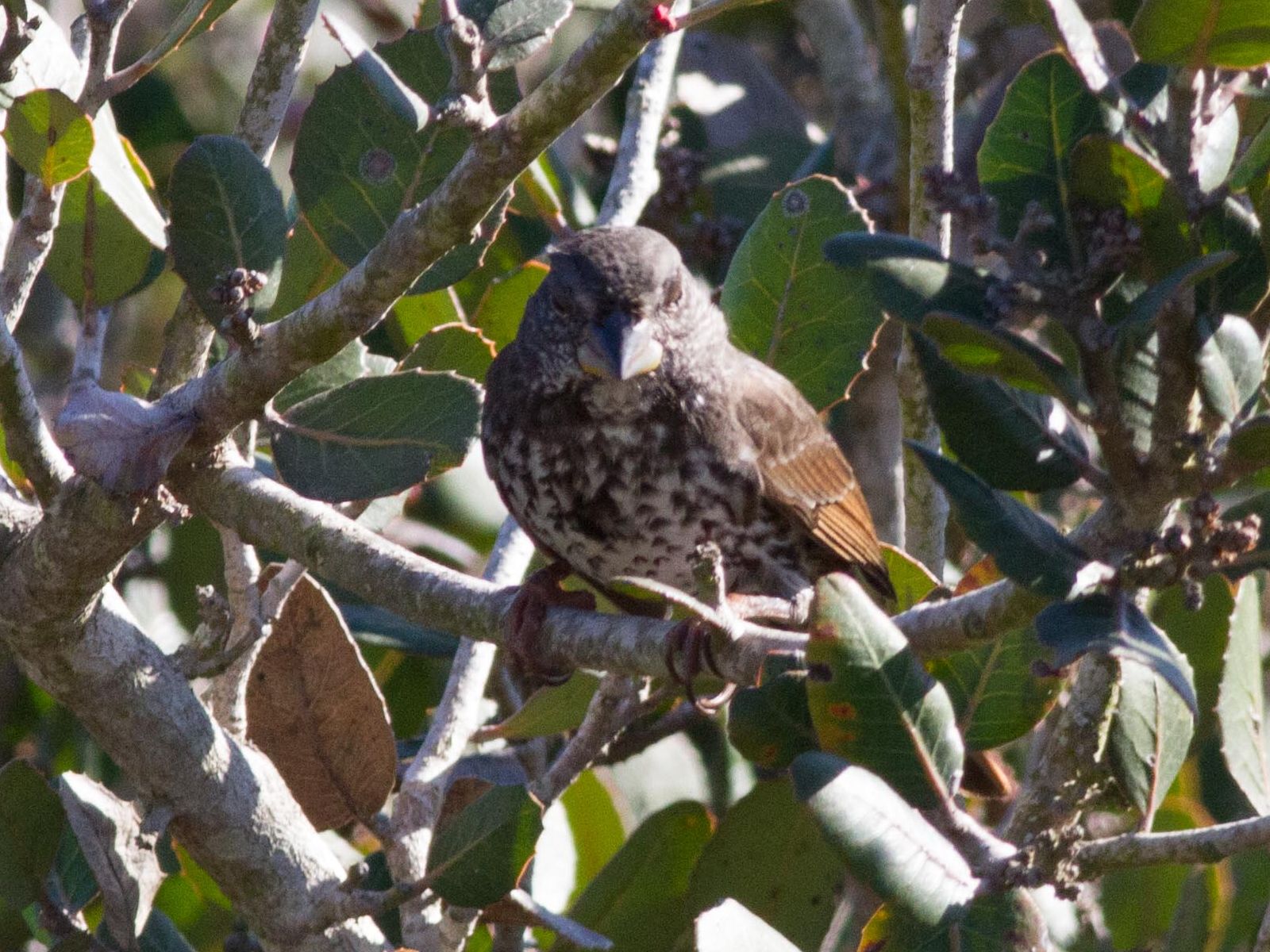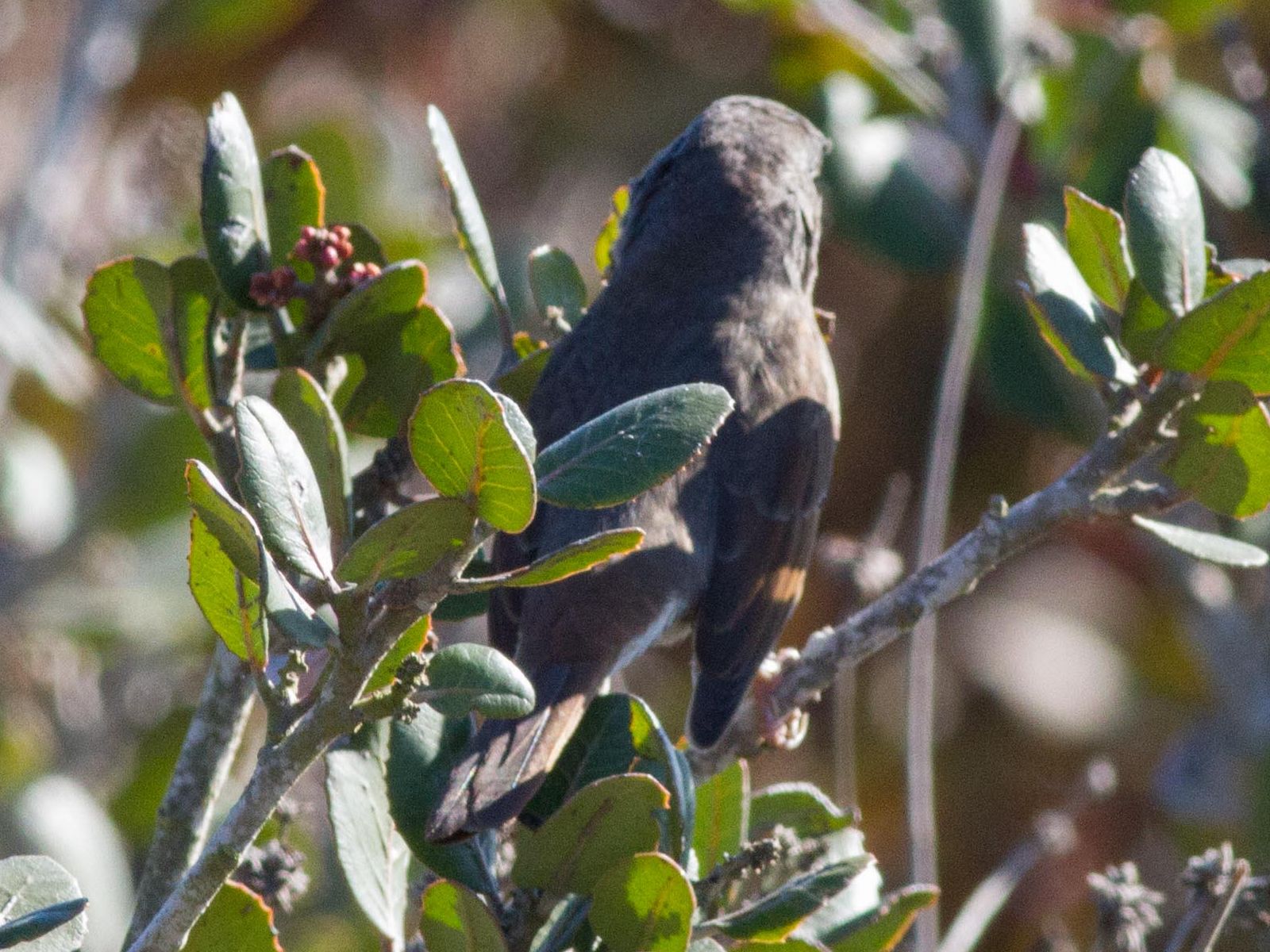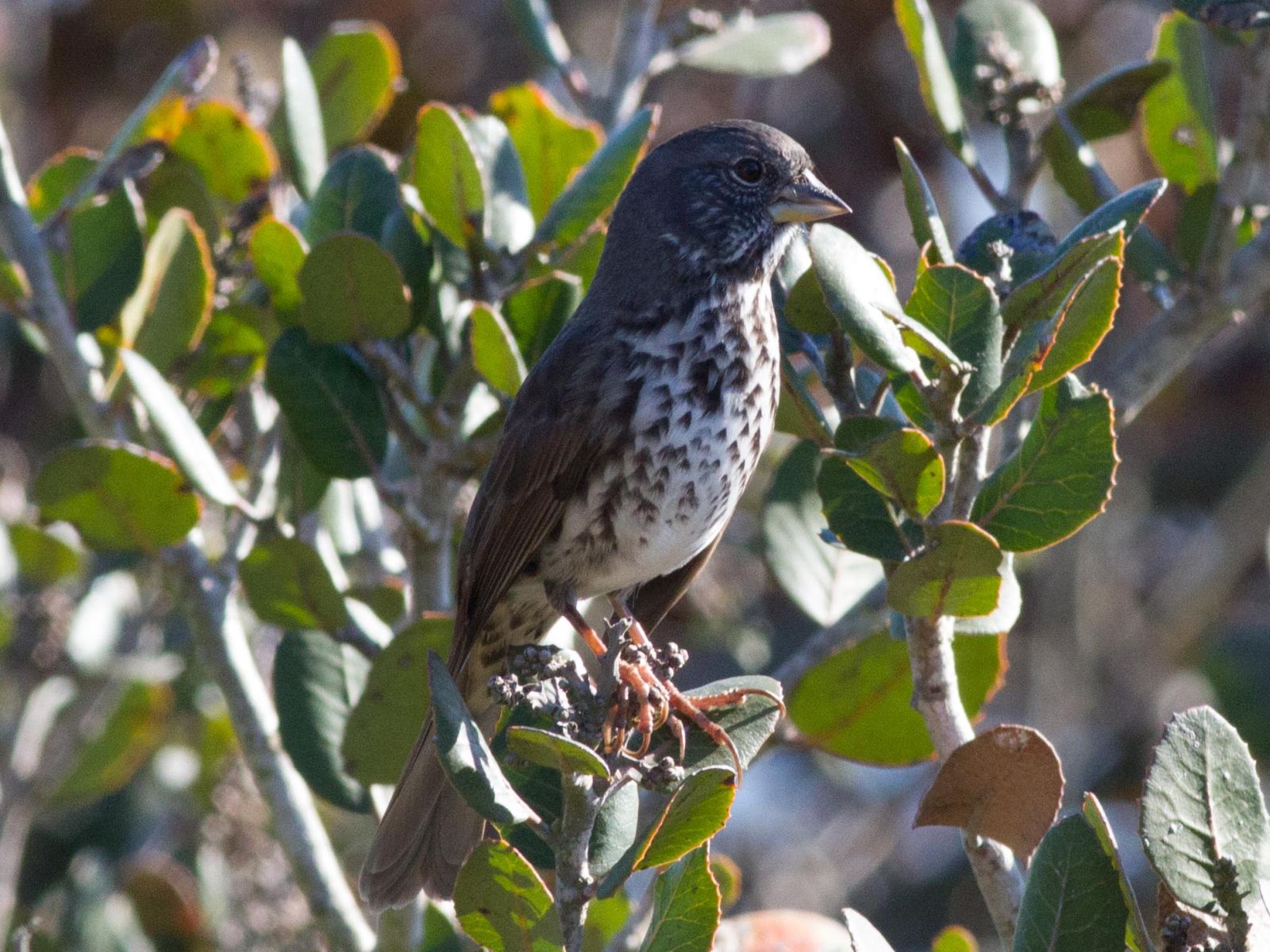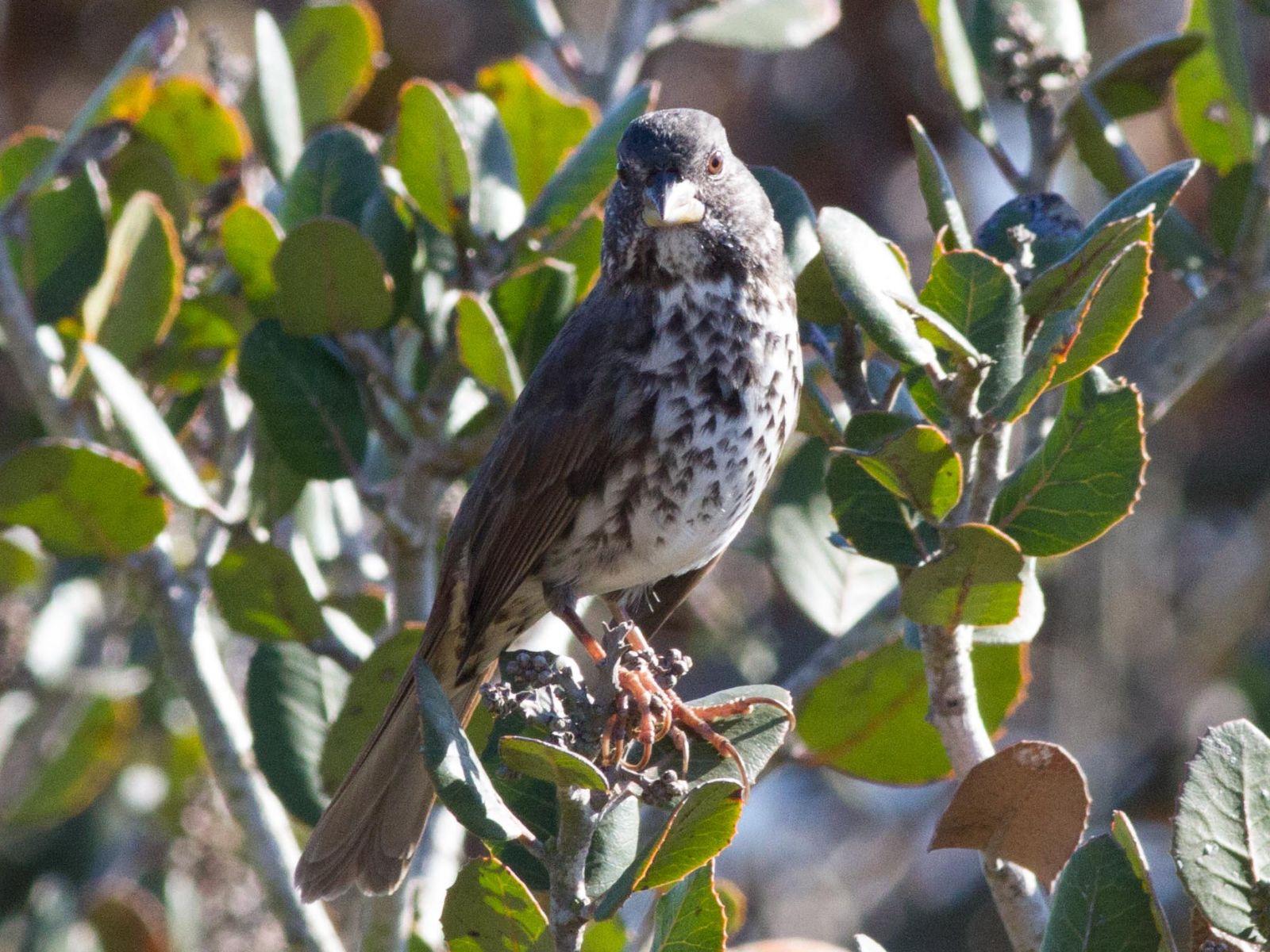[All photographs copyright, Gary Nunn 2013] – I made a quick sweep of Fort Rosecrans National Cemetery late afternoon 02 Dec 2013 on the lookout for unusual winter birds. Numbers of birds seem to have diminished here, even the Yellow-rumped Warblers were down, but I did find a couple of mixed flocks with some nicer birds present. In the pines just north of the west side administration building (main entrance) I located the previously reported “doublet” of Golden-crowned Kinglet Regulus satrapa which were easily located by their high pitched calls. Inquisitive as ever they both came very close to me in the low branches of the pine tree. In the same mixed flock a Brown Creeper Certhia americana also gave me a close pass and played hide-and-seek behind the pine tree trunk in front of me – always nice to see this species! Finally I checked around for “crowned” sparrow flocks but without much success. But a small gathering of sparrows in the far southwest corner of the cemetery did contain a single first-winter White-throated Sparrow Zonotrichia albicollis which proved quite shy but eventually emerged at some distance for a couple photographs.
Author Archives: Gary Nunn
Black Scoter female in the lead
[All photographs copyright, Gary Nunn 2013] – I have been out testing my new Canon 500 mm f4 lens and it can really pull in excellent quality images from great distances. With the addition of the 1.4X teleconverter attached it comes out with an 1120 mm effective focal length on the 7D body “cropped” APS-C sensor size. Add to that the Image Stabilization (IS) and I think I will be documenting a few more good birds seawatching out there soon! I found this adult female Black Scoter Melanitta americana cruising at the front of a small flock of Surf Scoter heading south. As I have mentioned in previous posts on this species, it often seems to head up the front of the flock when among Surf Scoters. Perhaps the slightly smaller size allows it to travel faster than its congeners? I photographed this flock from quite an extreme distance – these ducks were just beyond the Pt. La Jolla kelp bed and can still be easily identified from the image crops.
Scarce ducks heading south past Pt. La Jolla
[All photographs copyright, Gary Nunn 2013] – I made it down to Pt. La Jolla this morning at dawn to see what ducks and loons might be passing by on migration south. Overall there was little movement of birds and only a few groups appeared from the north. In addition the absence of any onshore wind kept everything at a considerable distance. But checking through the ducks carefully I came up with some unusual finds!
Looking north I saw a flock of ducks coming towards me, some quite large, that appeared definitely reddish around the head. My first thought was Redhead since we have some good wintering numbers of this species around Mission Bay. But as they came into better lighting the rufous turned to a nice chestnut and revealed eleven Canvasback Aythya valisineria mixed in the flock! Canvasback really dwarf most other diving ducks when seen flying together in mixed flocks. Canvasback can be told apart from Redhead by their larger size, sloping forehead to a black bill, chestnut head color, and the gray upperwing panel shown in flight (this panel is paler gray and more prominent in Redhead).
A little while later, after some flocks of Surf Scoter had passed by, I spotted three dark ducks coming from the north. Ranging just outside the kelp beds, to my surprise, the middle bird had a nice pale buff cheek patch and offwhite belly patch. It was a juvenile/immature type Black Scoter Melanitta americana and the first of this species for my 2013-2014 seaduck-watching winter period here in San Diego. Nice! The Black Scoter was tucked in between two other ducks, the leading bird being a Surf Scoter. The third bird also looks to be this latter species.
Melaleuca tree scores – Blackpoll Warbler in Coronado, San Diego
[All photographs copyright, Gary Nunn 2013] – The exciting news of a Blackpoll Warbler Setophaga striata, found by Paul Lehman and Barbara Carlson in Coronado, San Diego, lifted me out of a dull early-morning blur checking through endless Yellow-rumps at Mission Bay. I jumped in the car and soon made it over there to check it out. While I was picking over warblers shooting in and out of several favored Melaleuca trees, Paul and Barbara came back over and helped me look for the Blackpoll. Sure enough, two minutes later Paul pointed to the left side of the tree and there was the bird! Harassed severely by Yellow-rumps, the Blackpoll was very flighty and only settled for a moment in view, disappearing around the back of the tree into more quiet tangles. It then hopped trees and showed itself atop the opposite Melaleuca tree where I obtained a nice series of photographs.
This appears to be a diffusely marked first fall individual with a nice yellow coloration and indistinct streaks. The golden-yellow lower legs and particularly the feet, characteristic of Blackpoll Warbler, can be easily picked out in many of the photographs below, especially the final image. A very nice wood-warbler find and a new San Diego County bird for me that I had hoped to come across this fall.
Thin pickings – one White-throated Sparrow in Point Loma
[All photographs copyright, Gary Nunn 2013] – It is almost mysterious the absence of birds around Point Loma. Even compared to a few days ago, it just emptied of birds. I was about to leave Fort Rosecrans National Cemetery on 30 Oct 2013, as it was getting towards dusk, when a familiar sparrow “seep” call caught my attention. Sure enough I had flushed a White-throated Sparrow Zonotrichia albicollis out of the Pride of Madeira plants and it teed up perfectly on the wall in front of me! After posing for a few photographs it took off with a band of Dark-eyed Junco picking over the roadside debris. This appears to be a first-winter individual still retaining considerable juvenile streaked feathers on the underparts. I think by this date last year I had found half a dozen White-throated Sparrows around Point Loma, so 2013 has been really thin pickings for even the more commonly expected eastern birds.

White-throated Sparrow – Fort Rosecrans National Cemetery, Point Loma, San Diego, California 30 Oct 2013

White-throated Sparrow – Fort Rosecrans National Cemetery, Point Loma, San Diego, California 30 Oct 2013
Very different – “Eastern” Bell’s Vireo in Point Loma
[All photographs copyright, Gary Nunn 2013] – I definitely jumped when a short-tailed green bird with a prominent white wing bar hopped out in front of me late this afternoon in a tiny planted cedar tree at Fort Rosecrans National Cemetery. I ditched the binoculars immediately in favor of the camera, who knows where this thing might go next! As it turned out this was a smart move. After showing itself in the tiny cedar for a minute it took off through the cemetery fence. Resurfacing beyond the fence for a few seconds it then just vanished. I did not see it again in spite of considerable searching.
This bird appears to be an “Eastern” Bell’s Vireo most likely of the nominate V.b. bellii form. It is certainly much brighter colored than the arizonae form and, so far as I can tell, also the intermediate colored medius form. Features of plumage coloration matches the detailed description of the nominate bellii form of Bell’s Vireo in Pyle (1997), Identification Guide to Passerines, and the photographs also match very closely the color illustration of a bright “Eastern” Bell’s Vireo shown in The Sibley Guide to Birds (the illustration is presumably of the nominate bellii form, although it is not labeled with a scientific name).
Elements that jumped out at me about this bird included; the much shorter tail compared to our local breeding pusillus form of the species (“Least” Bells’s Vireo), the olive-green coloration of the upperparts, the strong bright yellow wash on the underparts, the bright yellowish uppertail coverts (seen in flight), and the striking white wing bar on the greater coverts. In addition behavioral characteristics support the identification as “Eastern” Bell’s Vireo. This bird flicked its wings and pumped its tail continuously like the eastern birds. Examination of many of the photographs below show the wings in semi-raised (“flicked”) poses, including one shot with one wing flicked up, as well as various shots of the tail pumped upwards.
The “Eastern” Bell’s Vireo is a very rare vagrant to San Diego and California as a whole in fact. There are two previous reports from San Diego County including one found at Point Loma 10 Oct 1988 by Richard Webster and another found more recently in the Nestor neighborhood of Imperial Beach on 02 Nov 2012 by Paul Lehman. I believe this is the first “Eastern” Bell’s Vireo to be photographed in San Diego County and certainly a very nice looking vireo to encounter.
Royalty visits – Golden-crowned Kinglet comes to Point Loma
[All photographs copyright, Gary Nunn 2013] – I had just stepped out of my car early yesterday morning when I heard the unmistakeable high-pitched call of a Golden-crowned Kinglet Regulus satrapa. Funny thing was that it was coming from a small Lemonadeberry Bush right in front of me! Sure enough, as I approached a bit closer, out popped this tiny and delightful looking royal visitor! I know the call of this species well because it sounds very similar to its congener the Goldcrest from Europe which I had grown up listening to from a very young age. Some pishing soon attracted the inquisitive Kinglet over to my side of the fence. At 7:00 am in the morning there is not much light so I used the “breathhold” tactic. Put the camera shutter speed down as low as it takes to get a correctly exposed image and then hold your breath and the camera as tight as you can while running shots! Usually a few good images can be obtained this way, and as you will see below, even the blurry ones can be pretty artistic looking! The final image below, cropped to the head shot, was the best quality taken at ISO 3200 and 1/60th second, lens wide open at f 5.6 aperture.
Frazzled looking Dusky Flycatcher in Point Loma
[All photographs copyright, Gary Nunn 2013] – While watching the very camera friendly Hammond’s Flycatcher at Fort Rosecrans National Cemetery another dull olive-gray Empidonax, agitated and a lot more frazzled looking, suddenly came flying into the scene next to it. Interacting briefly with the Hammond’s, the new flycatcher then moved off to a distant isolated pine tree before finally returning briefly to feed along the fence line. At first I thought it might be another Hammond’s Flycatcher but its longer tailed look, different head shape, and strong looking bill, made me think again. After examining detailed photographs that show its very short primary projection, relatively scruffy looking plumage, strong bill, and mostly absent yellow coloration on the underparts, this does appear to be a Dusky Flycatcher Empidonax oberholseri.
The photographs below show very well the short primary projection characteristic of Dusky Flycatcher. One can compare it to the the rakish, extremely long, primary projection of Hammond’s Flycatcher (for example, see my previous blog post). In addition the pale whitish patch around the lores area is very evident along with the stronger bill and more rounded head shape. This individual has just begun molting with some patchy new and stronger colored plumage (more olive) scattered around on its body. Much of the underpart feathers appear to be worn looking.
Viewed in ideal lighting conditions the outer edge to the outer tail feather (r6) appears distinctly white in Dusky Flycatcher. The short primary projection and long tail creates the relative impression of about the longest tailed Empidonax there is in my opinion.
It is difficult to capture images from below of Empidonax bills and usually the coloration is next to impossible to see. My only advice is keep taking photographs from all angles underneath the bird! The following images show the characteristic narrower spear-shaped bill and extensive darker coloration of the lower mandible of Dusky Flycatcher. It really only has a pale base. The Gray Flycatcher has a fully pale lower mandible with a small dark tip, while the Pacific-slope Flycatcher is wholly pale and in addition of greater width with a spade shaped morphology.
One novel field character which I believe can differentiate Dusky Flycatcher apart from the confusion species, Hammond’s Flycatcher, is the small overhanging hooked tip of the upper mandible. To my eye it looks like the small hook seen on a vireo bill and is noticeable in the close-up head-shot below. Certainly this hooked upper mandible feature is very difficult to see with binoculars! But I feel I can always notice this hooked tip in photographs of birds that I believe are Dusky Flycatchers. Hammond’s Flycatcher has a smaller bill with more closely meeting mandible tips without the hook present on the upper mandible like Dusky Flycatcher. Maybe a “birding photography” strategy here is to “get as close as you can photographs of the bill tip”! I think it could be very useful for differentiating the two species apart. The hooked tip of the upper mandible can also be clearly seen on photographs of a Dusky Flycatcher that I found at Fort Rosecrans National Cemetery earlier this year. In my opinion Dusky Flycatcher is under reported in San Diego County due to the difficulties of identification. Look for the hook!
Camera friendly Hammond’s Flycatcher in Point Loma
[All photographs copyright, Gary Nunn 2013] – I am beginning to think video could be a great aid to teaching Empidonax identification. There is just a look-and-feel of each species in my opinion. I put together some high definition video clips of the Hammond’s Flycatcher Empidonax hammondii found by Sue Smith on 20 October 2013 at Fort Rosecrans National Cemetery, Point Loma, San Diego, California. This flycatcher was very approachable and you can hear the “flaparazzi” in the background. Yes, that noise is Matthew Binns’ Canon 1Dx shooting at a full 12.5 frames per second!
All the field marks appropriate for this species can be seen in the video including, most importantly I think; the extreme long primary extension beyond the tertials (start of the second clip, for example!), the strong yellow wash on the freshly molted plumage of the underparts, the small dark bill, and the light gray throat (tricky to see I agree, but it is actually not white). Digital photography, or videography for that matter, can be extremely helpful but lighting is a very important factor. To observe many of the subtle plumage coloration characteristics of Empidonax species avoid strong sunlight and follow a bird around into more shaded light conditions if possible. Also, obtaining truly representative images of primary extension can be frustratingly difficult. The best documentation photographs require the bird to be at camera height straight ahead of you standing with its side facing you. Photographs taken from above or below, or at an oblique angle, will be inferior and more difficult to interpret.
In addition the following still photographs show more of the field characters of this delightful small Empidonax species. Primary extension beyond the tertials is strikingly long in this species and presents a very good field mark if seen well at close enough range. Digital photography of course makes this much easier to study, but practice really helps when looking for this field mark. To photograph the flycatcher Mathew Binns let me try out his Canon 1Dx and 500 mm II lens and the first two shots below reflect this!

Hammond’s Flycatcher – Fort Rosecrans National Cemetery, Point Loma, San Diego, California 20 Oct 2013

Hammond’s Flycatcher – Fort Rosecrans National Cemetery, Point Loma, San Diego, California 20 Oct 2013
“Thick-billed” Fox Sparrow in Point Loma
[All photographs copyright, Gary Nunn 2013] – Just before leaving Fort Rosecrans National Cemetery today I heard an unfamiliar, but quite pleasant, bird song just outside the east fence line south of the eucalyptus grove. I walked over and, from some distance, caught sight of the bird singing atop a bush behind the perimeter fence. But then it immediately hopped down out of sight! Viewed from behind the sparrow shaped bird had a large gray head, gray back, rich rufous wings, a long rufous tail, and, particularly noticeable, rufous upper tail coverts demarcated against the gray back. Hmmm, to be honest I was a bit puzzled!
I walked down to the fence and decided to give the “Universal Bird Attractor” (Wrentit chatter call!) a go. I waited a few minutes and was about to give up when, sure enough, out hopped the bird I had just seen. I was impressed to see it was a Fox Sparrow of the megarhynchus group of forms, more commonly known as “Thick-billed” Fox Sparrow! There were in fact two birds traveling together, one with a real honking grosbeak sized bill and the second a bit smaller billed.
It seems most likely both these birds are of the Passerella iliaca stephensi form found breeding in Southern California including just a handful found summering on the highest mountain tops in San Diego County. “Thick-billed” Fox Sparrows are only known to migrate a short distance moving to lower elevations in the winter near to their breeding range. So most likely these two birds originated nearby or from the southern Sierras.
I was confused by the bill color of these two individuals which both show some orange-yellow coloration on the lower mandible, and in one bird the upper mandible. What’s puzzling is that Thick-billed Fox Sparrows are illustrated in field guides with uniformly gray-colored bills. However after researching this point a bit further, including Jim Rising’s excellent The Sparrows of the United States and Canada illustrated by David Beadle, I discovered that outside the breeding season the bill can be more orange-yellow, and was in fact illustrated this way in older descriptions of these large-billed forms of Fox Sparrow. The Handbook of the Birds of the World, Vol. 16, already treats the four natural groups of Fox Sparrow as full species and also mentions the bill coloration being more orange-yellow outside the breeding season for the “Thick-billed Fox-sparrow” (note the logical new common name).
The Fox Sparrow complex is almost certainly headed towards a more progressive taxonomic treatment when it will be subdivided into its four natural groups – Red, Sooty, Slate-colored, and Thick-billed. This could prove interesting for San Diego County birders since all four have been found here in the county! I would recommend keeping a careful note of when and where you have seen these very different looking forms of Fox Sparrow.


